NCERT Solutions for Class 6 Maths Chapter 3 Playing with Numbers
NCERT Solutions for class 6 maths chapter 3 Playing With Numbers will help students study the topics, such as multiples, divisor, factors, and the identification of factors and multiples. In the previous two chapters, we studied whole numbers and natural numbers. With the help of this chapter, we will take a step ahead and learn the meaning of factors and multiples of a number. NCERT Solutions Class 6 maths chapter 3 consists of activities related to these concepts that make learning super easy.
With the help of the exercise questions, students will be able to find out the factors of a number using different methods. They will also be able to comprehend the application of these concepts in their day-to-day lives. Class 6 Maths NCERT Solutions Chapter 3 Playing with Numbers has a total of 7 exercises. With the help of this article, we will do an in-depth analysis of NCERT Solutions Class 6 Maths Chapter 3, and also you can find some of these in the exercises given below.
- NCERT Solutions Class 6 Maths Chapter 3 Ex 3.1
- NCERT Solutions Class 6 Maths Chapter 3 Ex 3.2
- NCERT Solutions Class 6 Maths Chapter 3 Ex 3.3
- NCERT Solutions Class 6 Maths Chapter 3 Ex 3.4
- NCERT Solutions Class 6 Maths Chapter 3 Ex 3.5
- NCERT Solutions Class 6 Maths Chapter 3 Ex 3.6
- NCERT Solutions Class 6 Maths Chapter 3 Ex 3.7
NCERT Solutions for Class 6 Maths Chapter 3 PDF
One of the key concepts covered in the NCERT solutions class 6 maths is finding the factors of a number in a stepwise manner. The only way students can get a good grasp of the concepts is by solving all the questions given in this coursebook. The NCERT Solutions for Class 6 Maths Chapter 3 are free to download using the links given below:
☛ Download Class 6 Maths NCERT Solutions Chapter 3 Playing with Numbers
NCERT Class 6 Maths Chapter 3
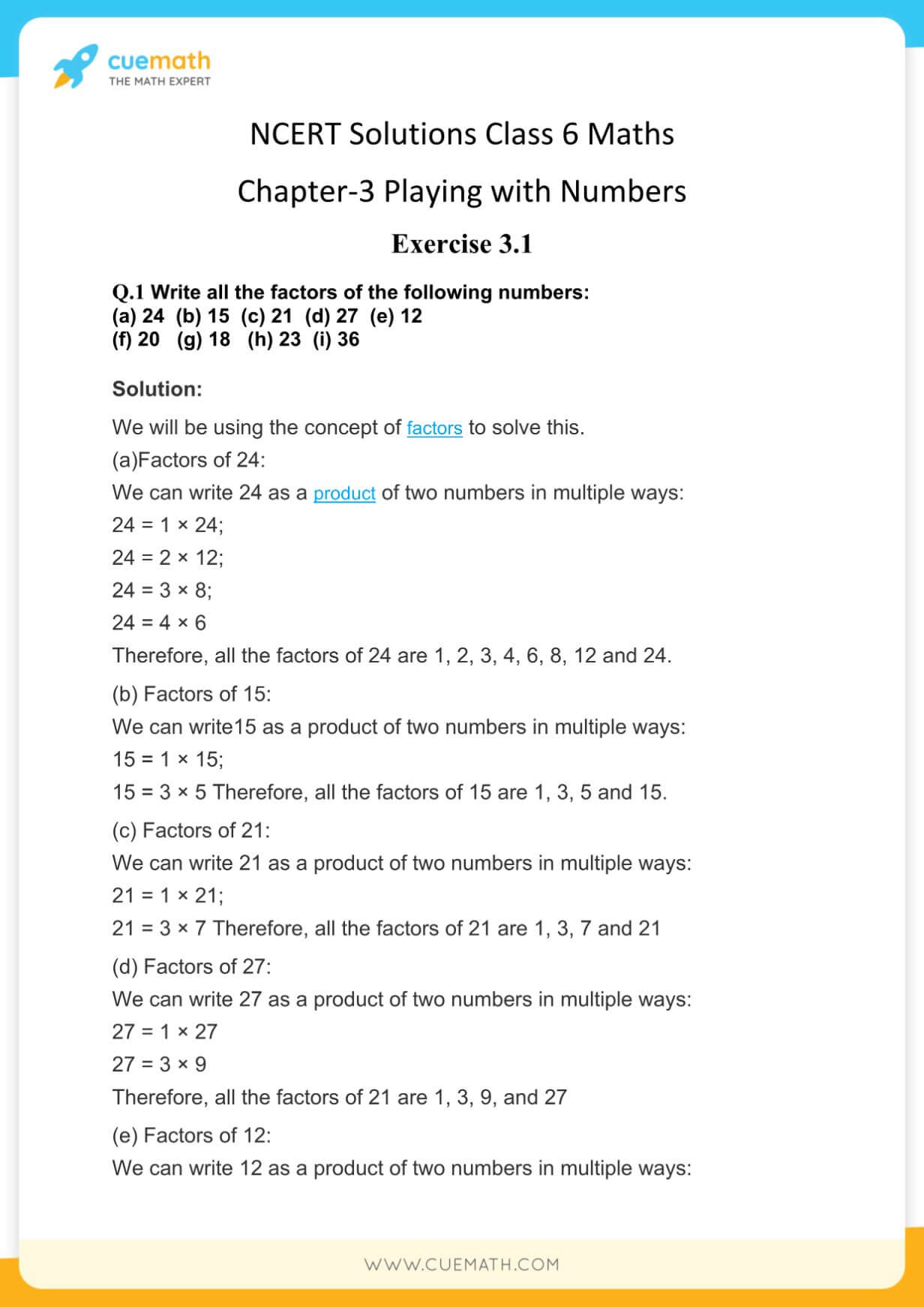
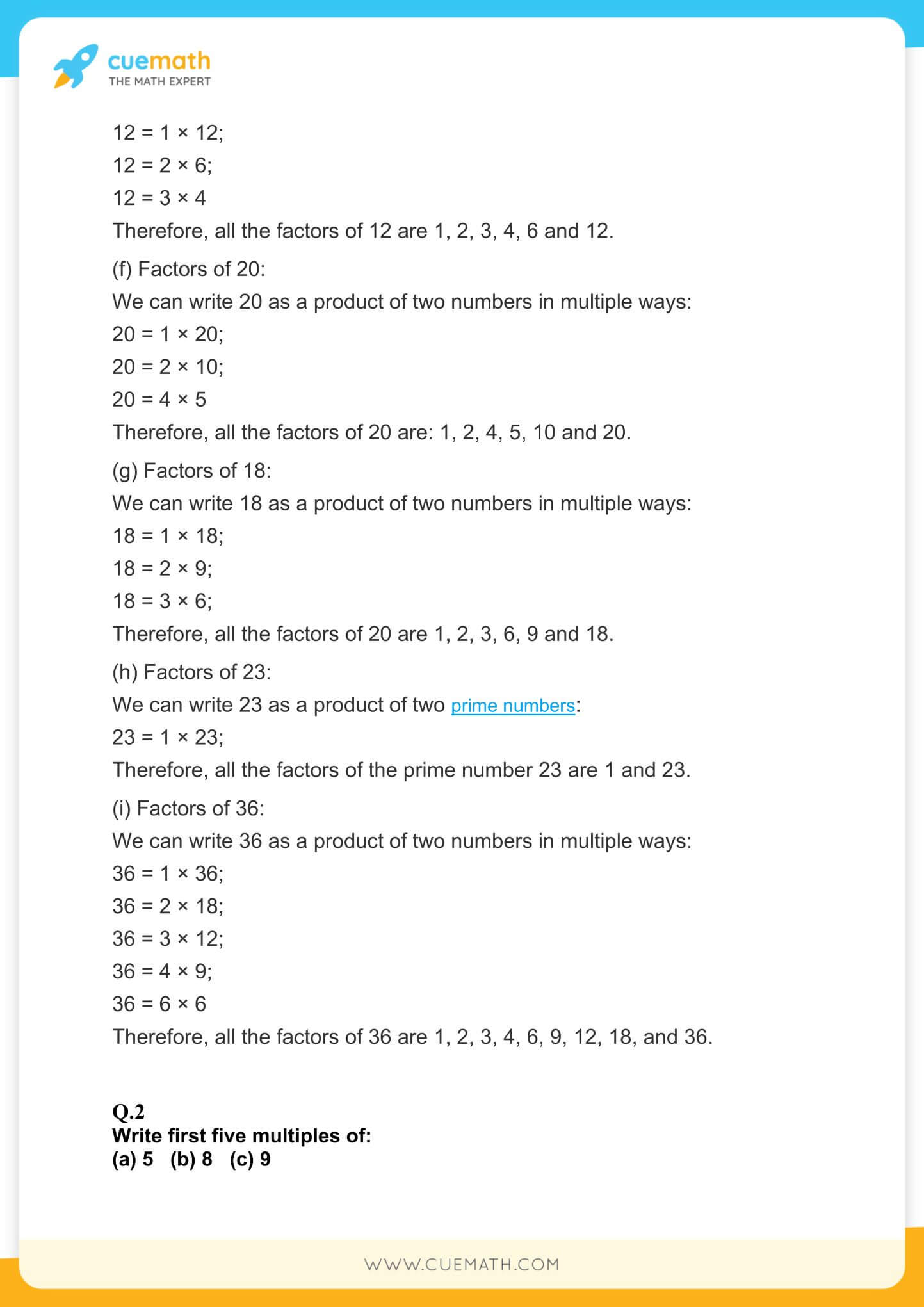
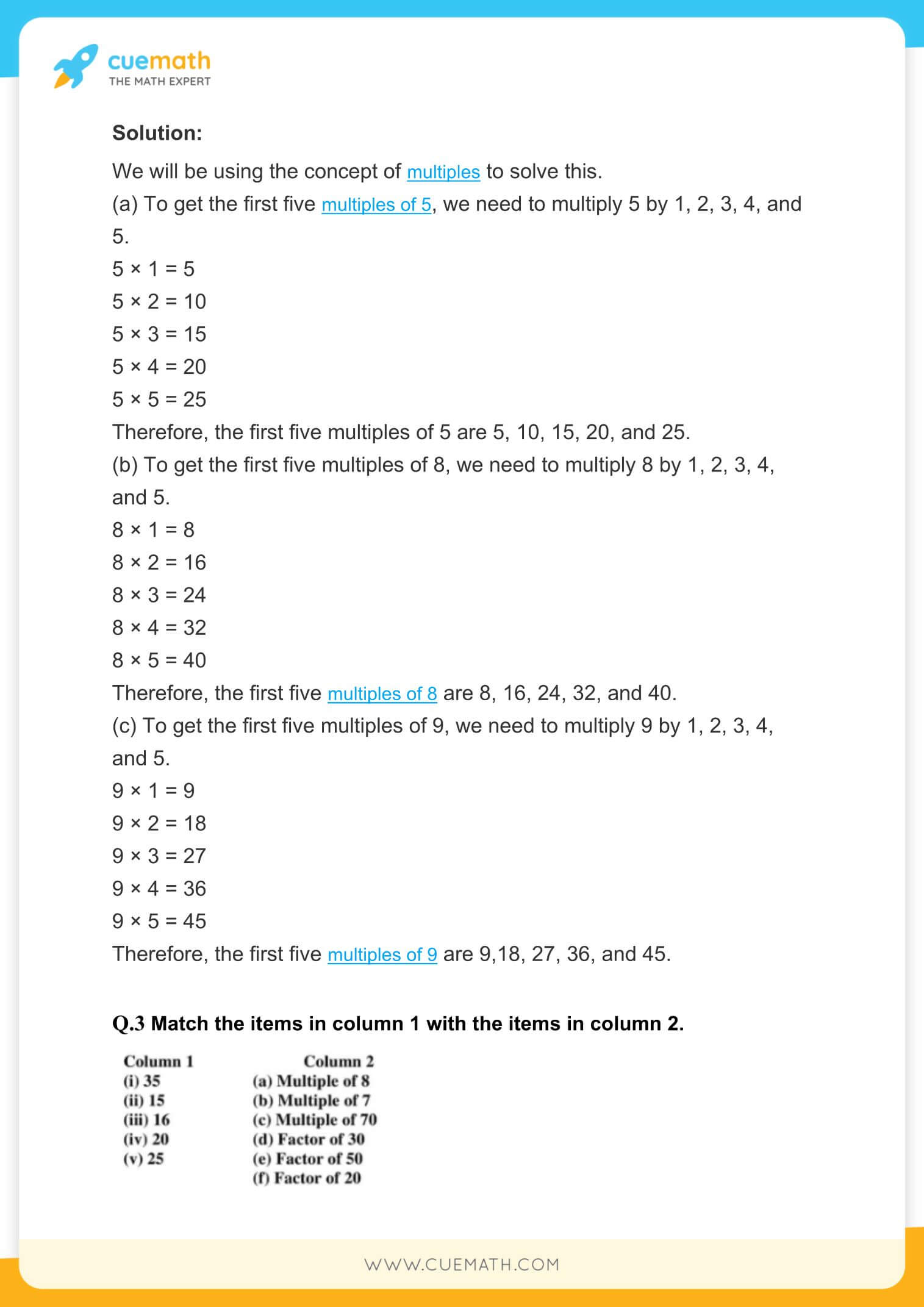
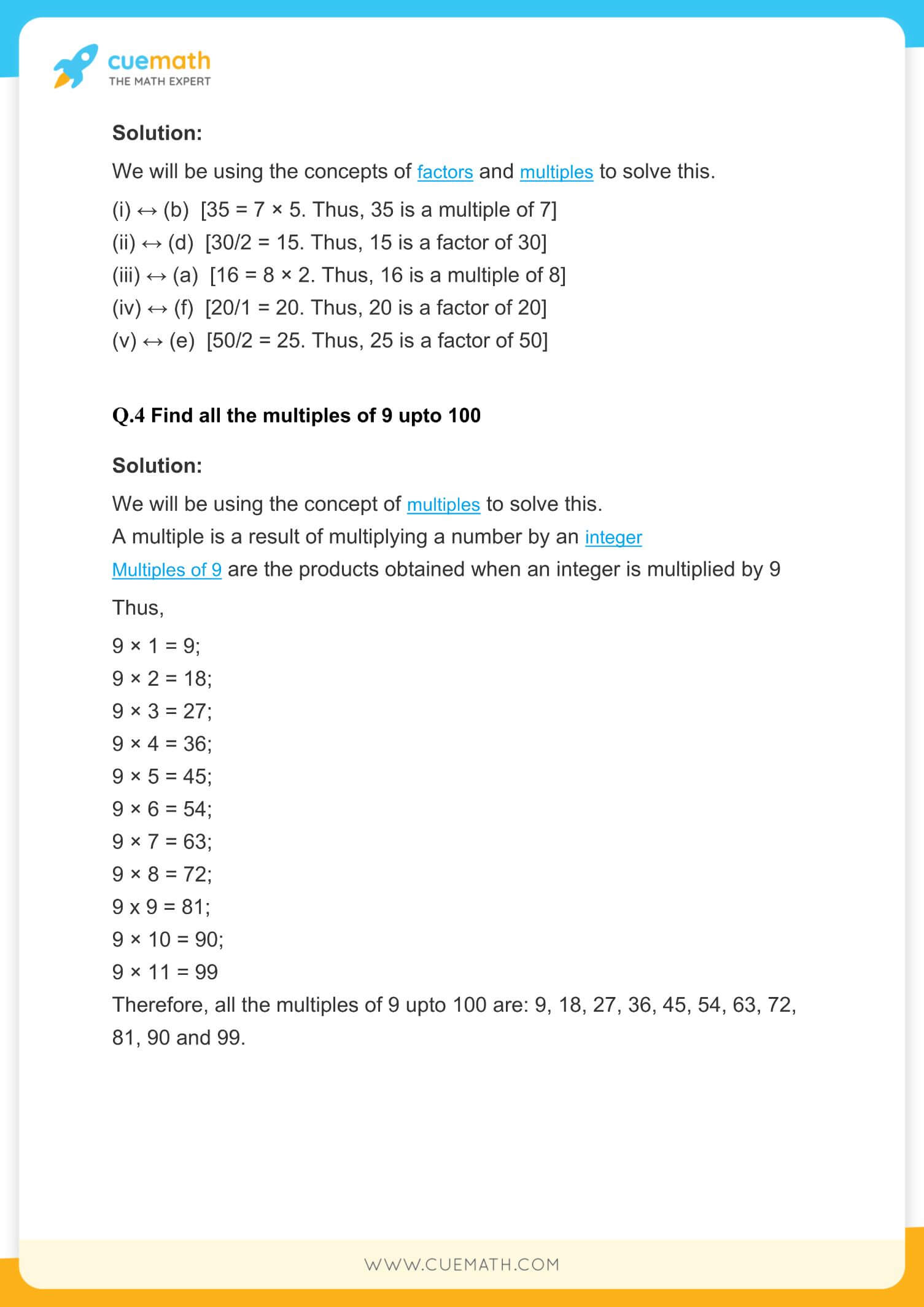
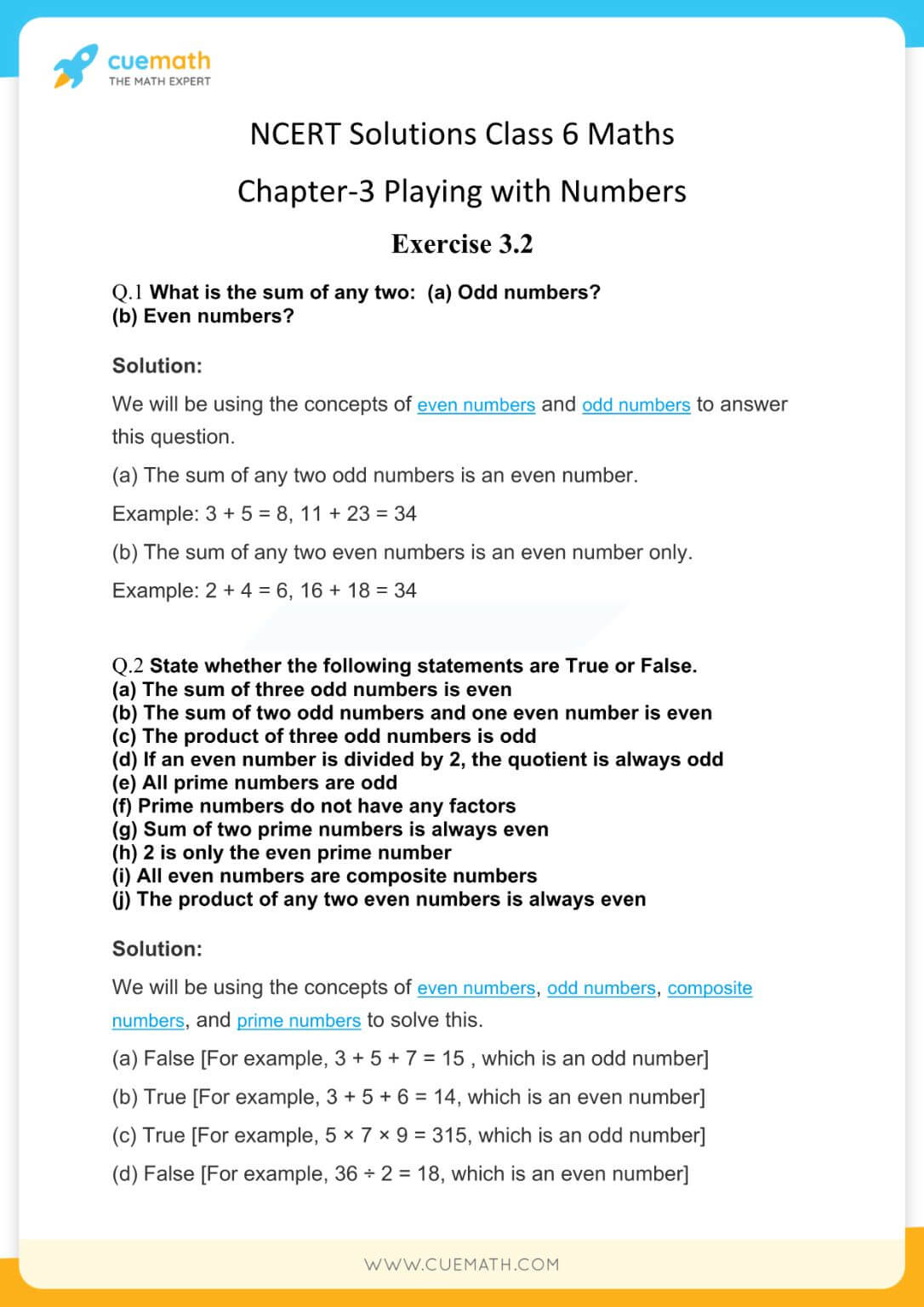
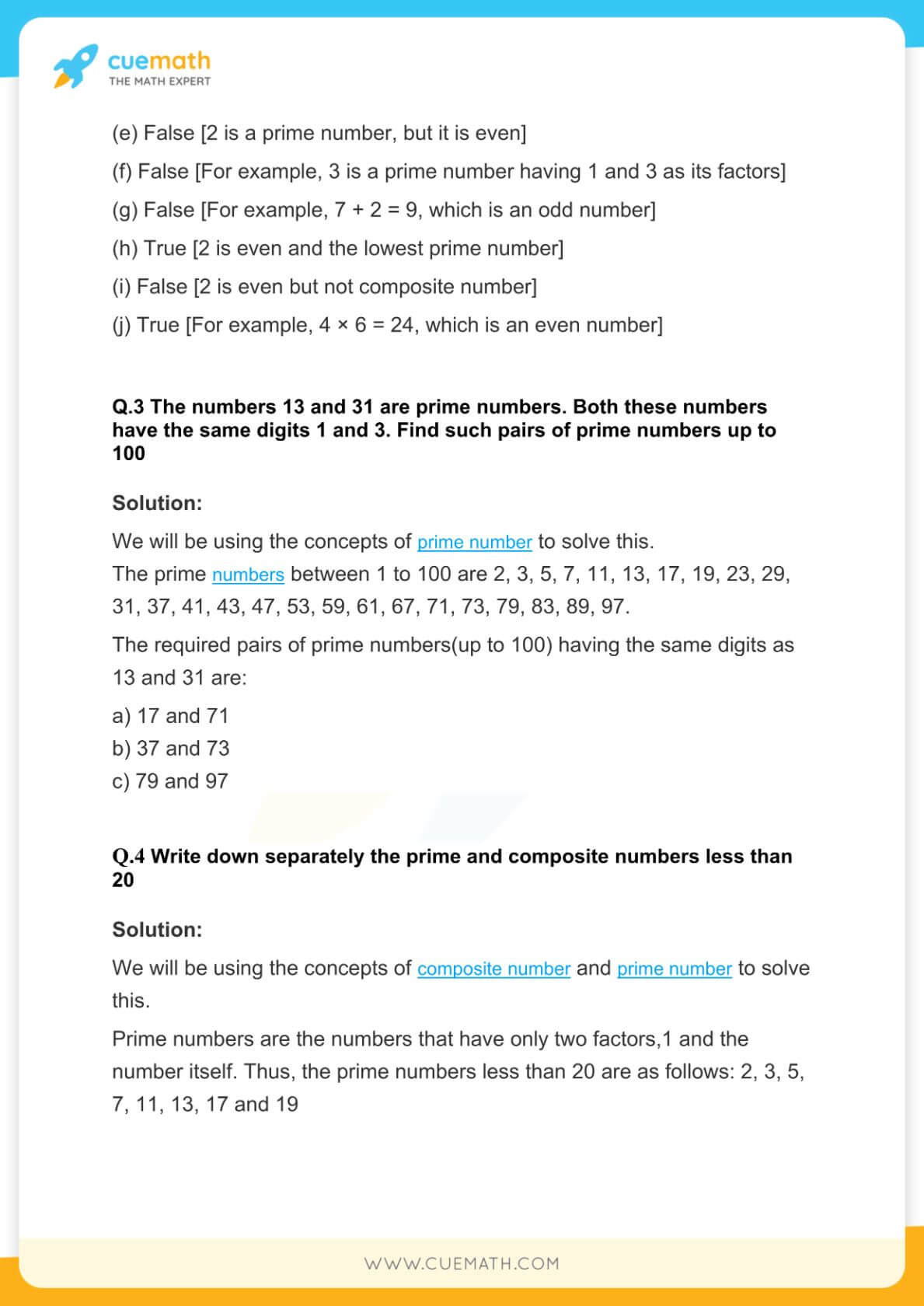
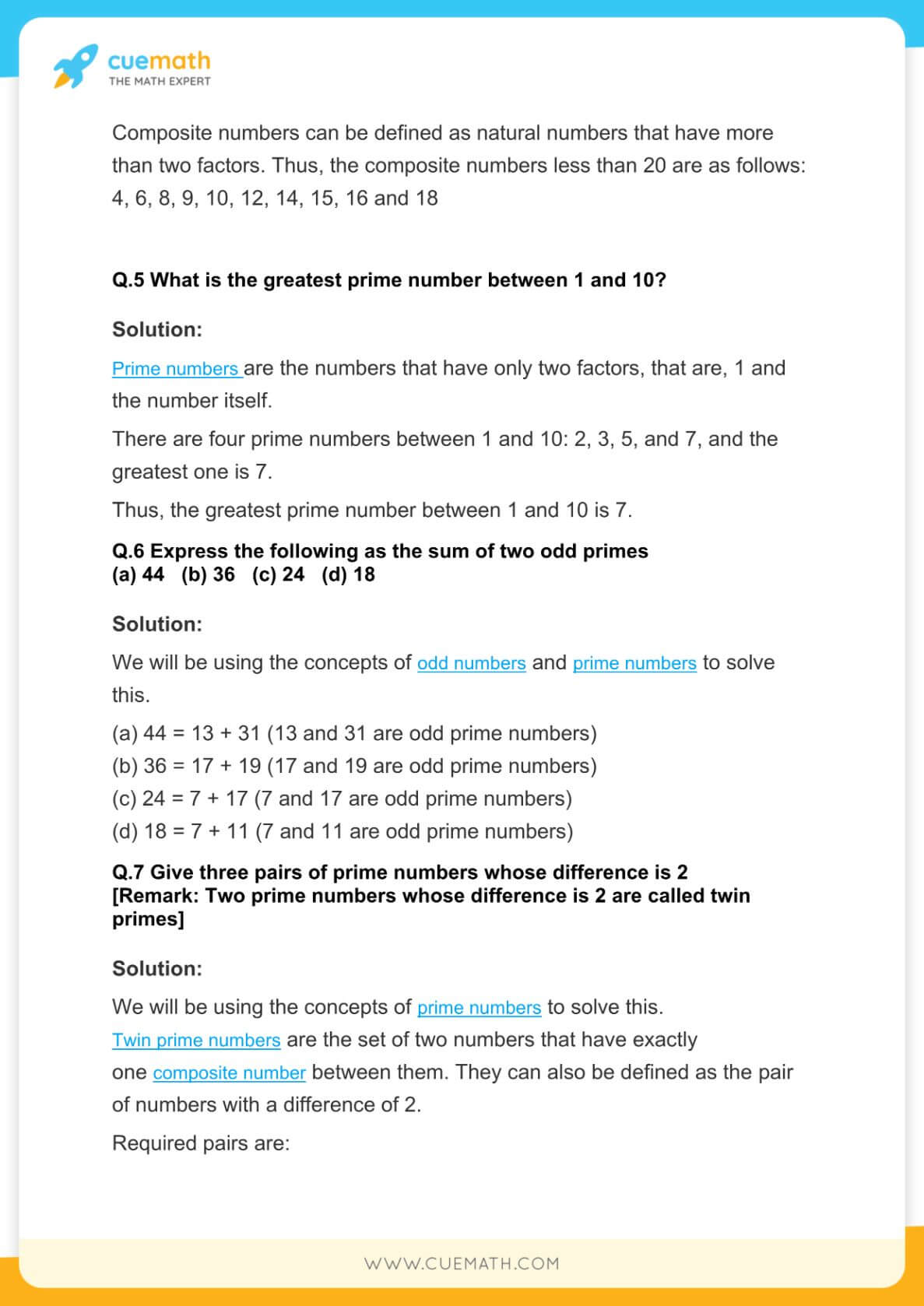
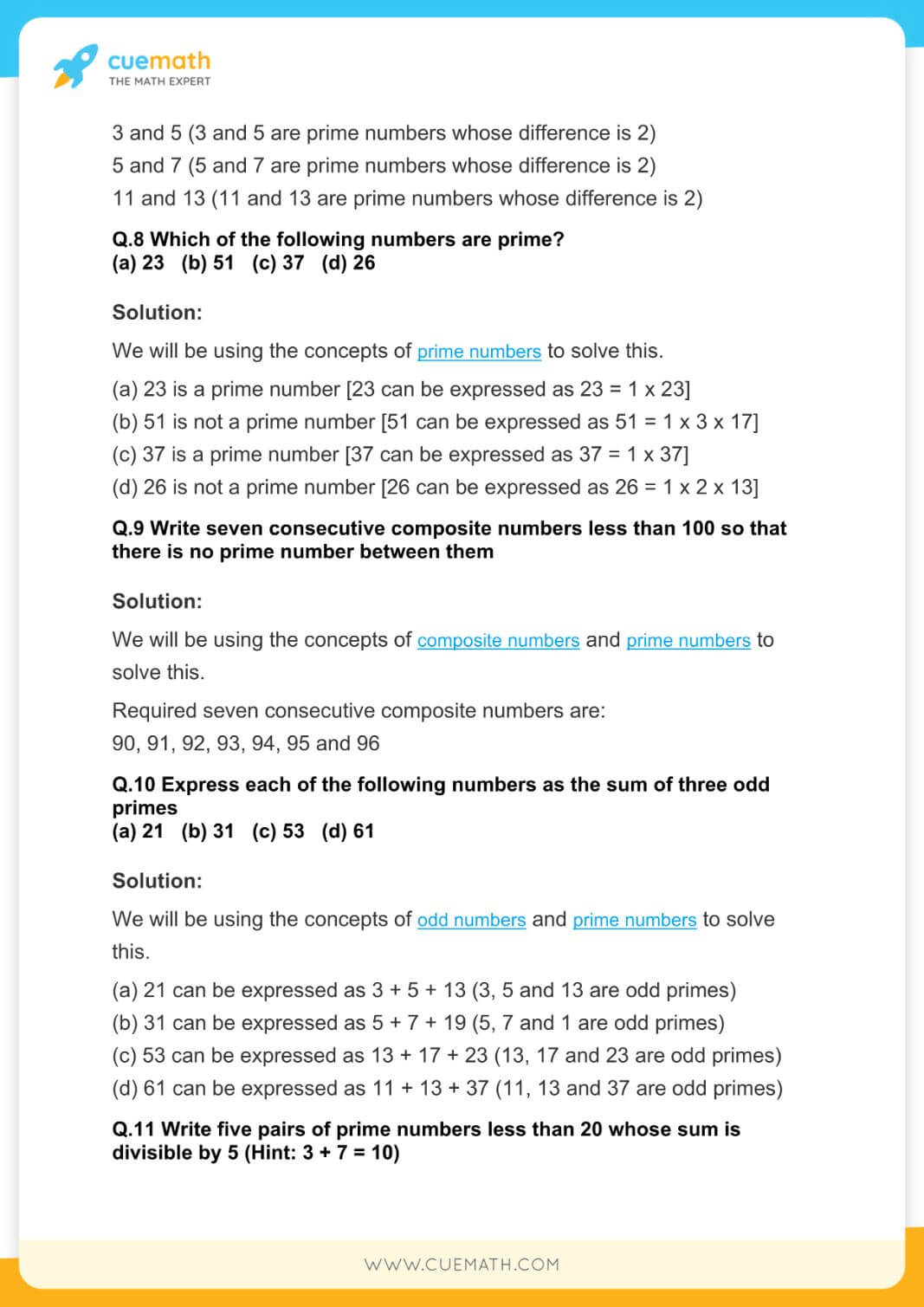
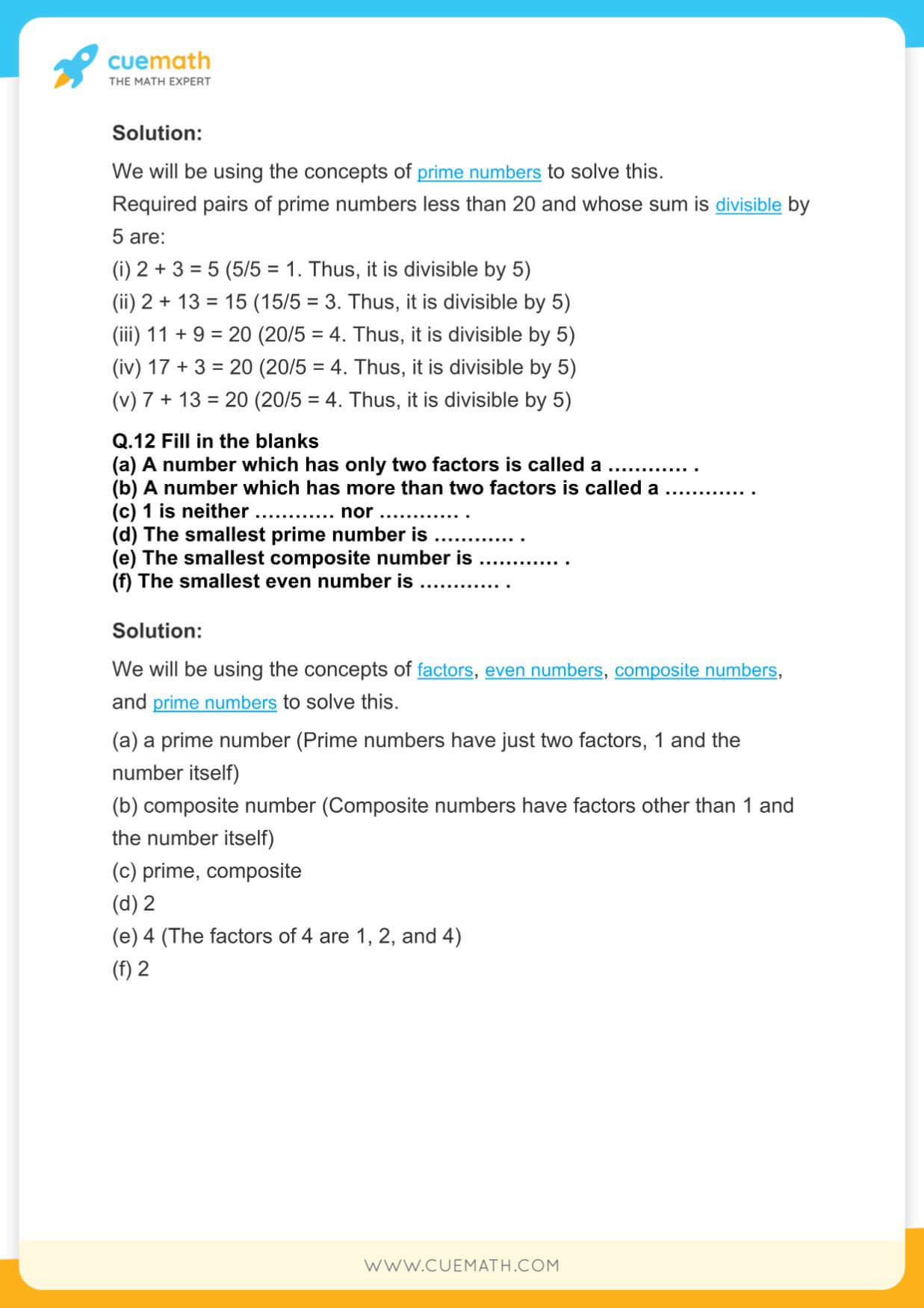
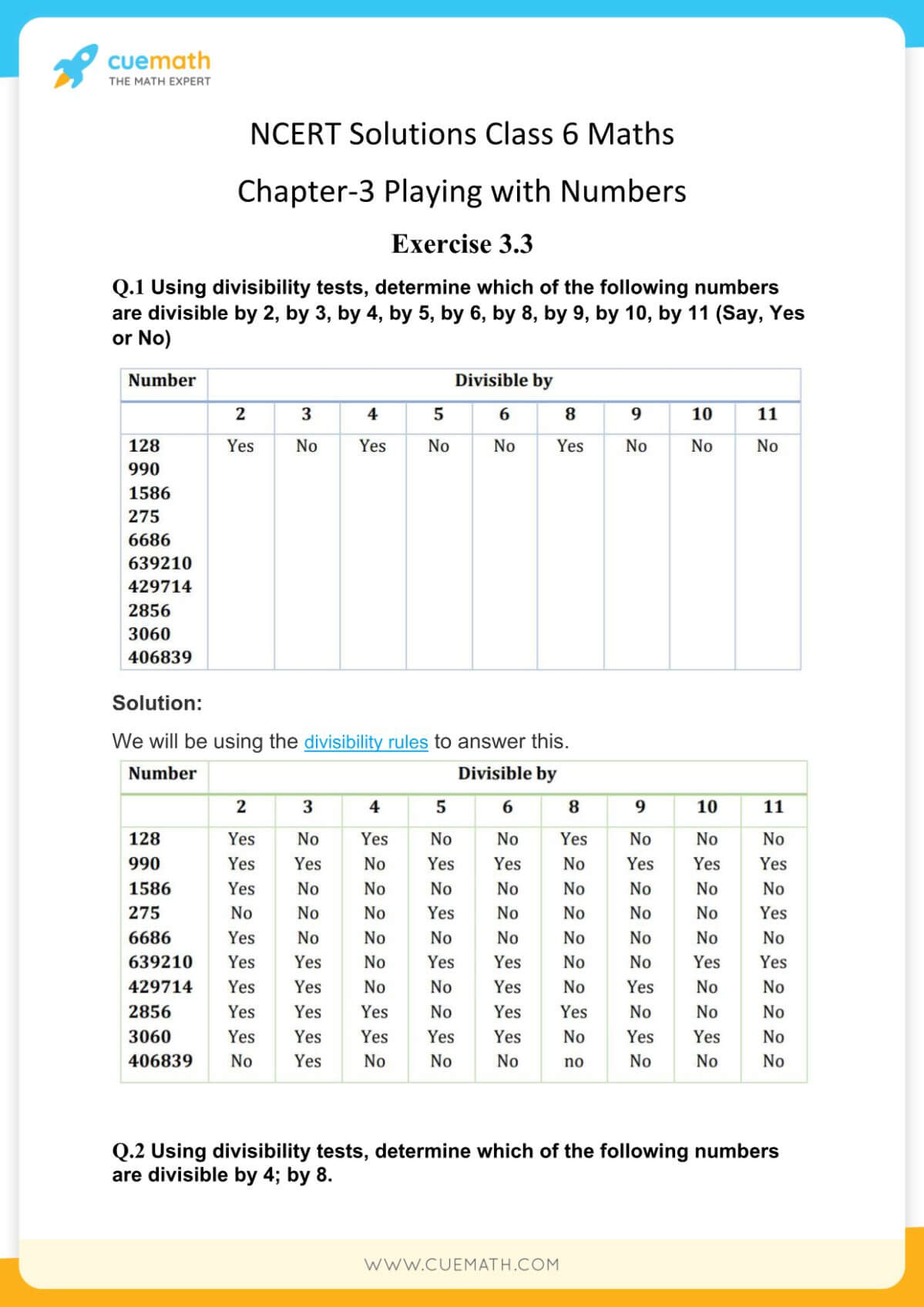
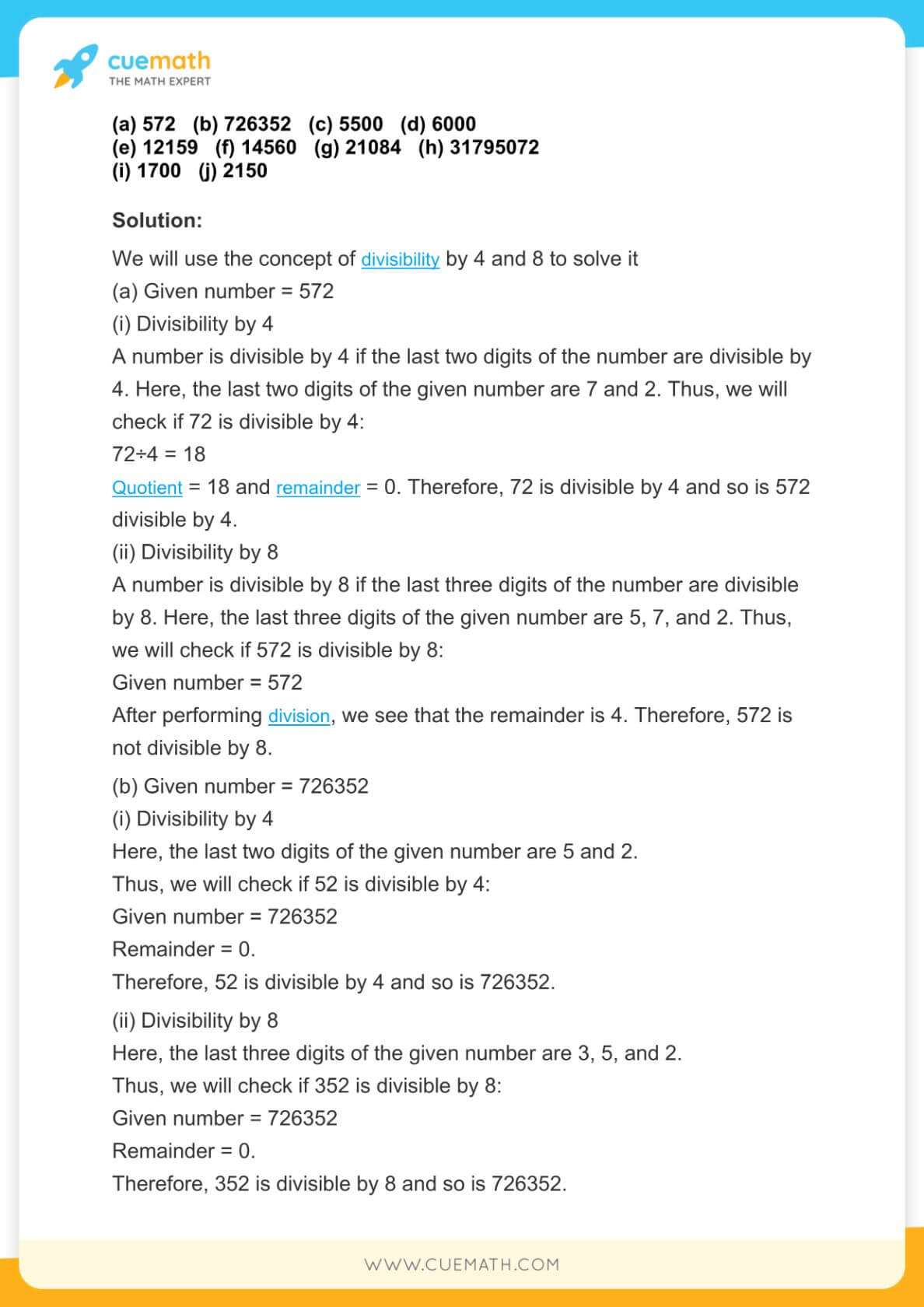
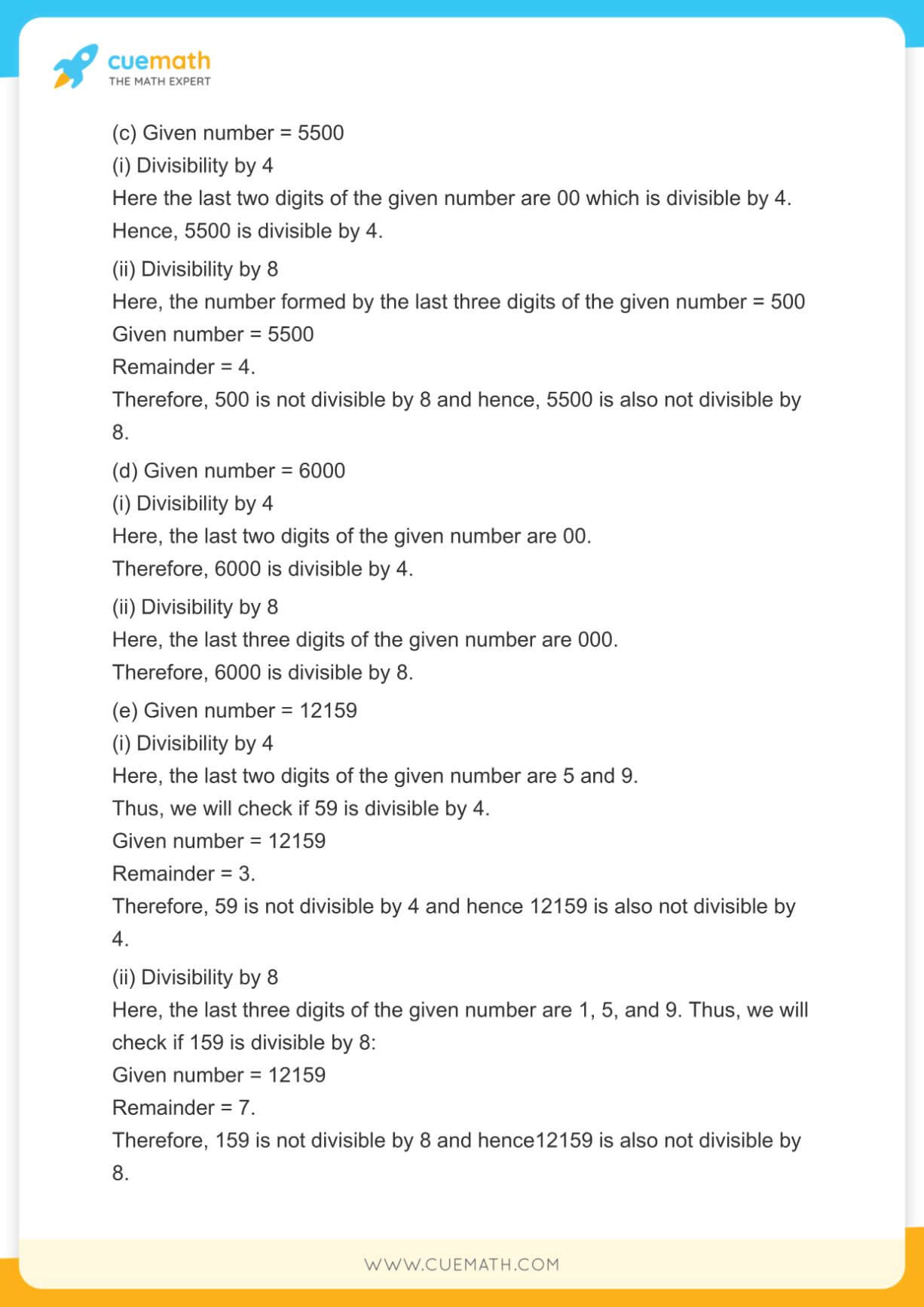
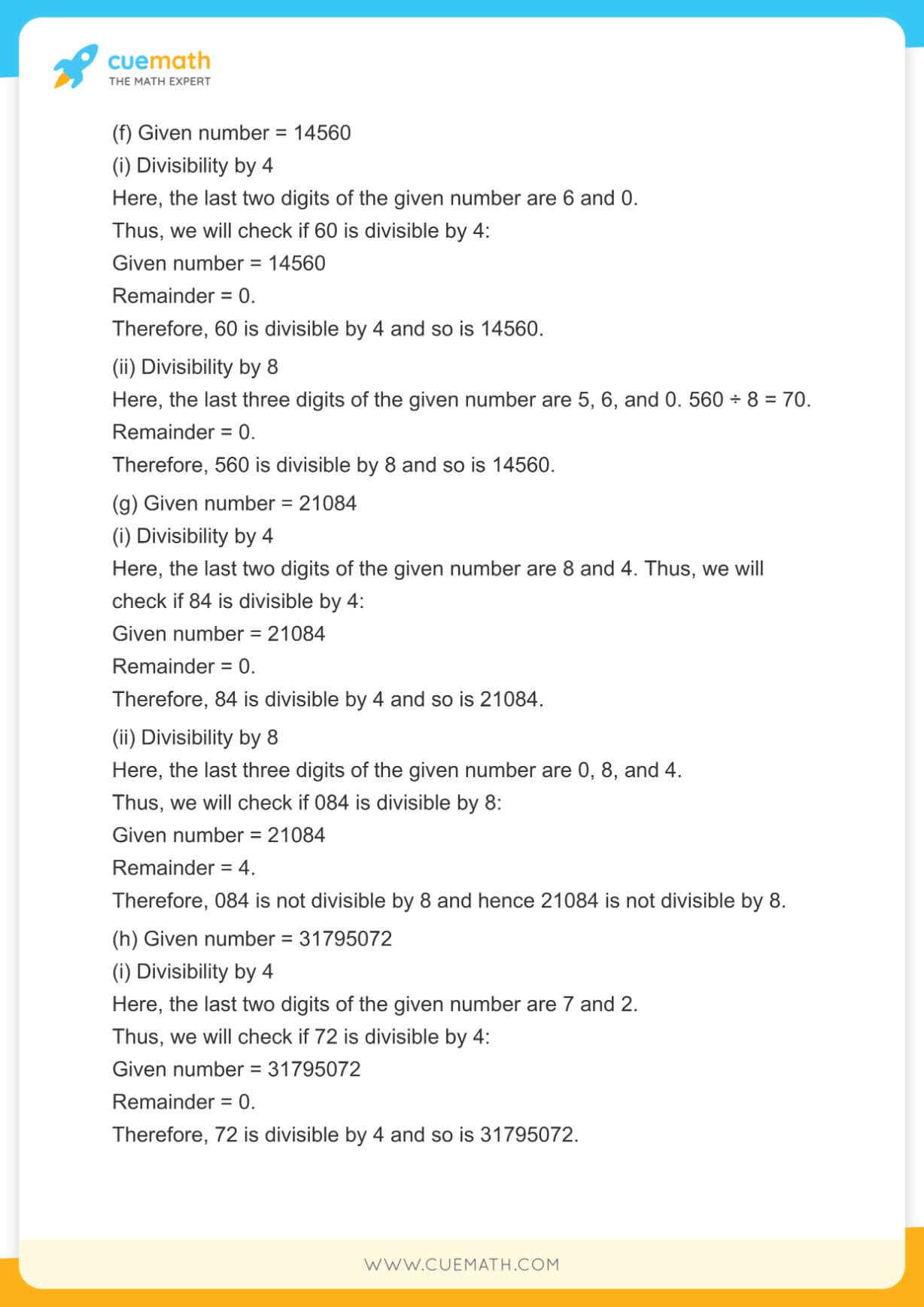
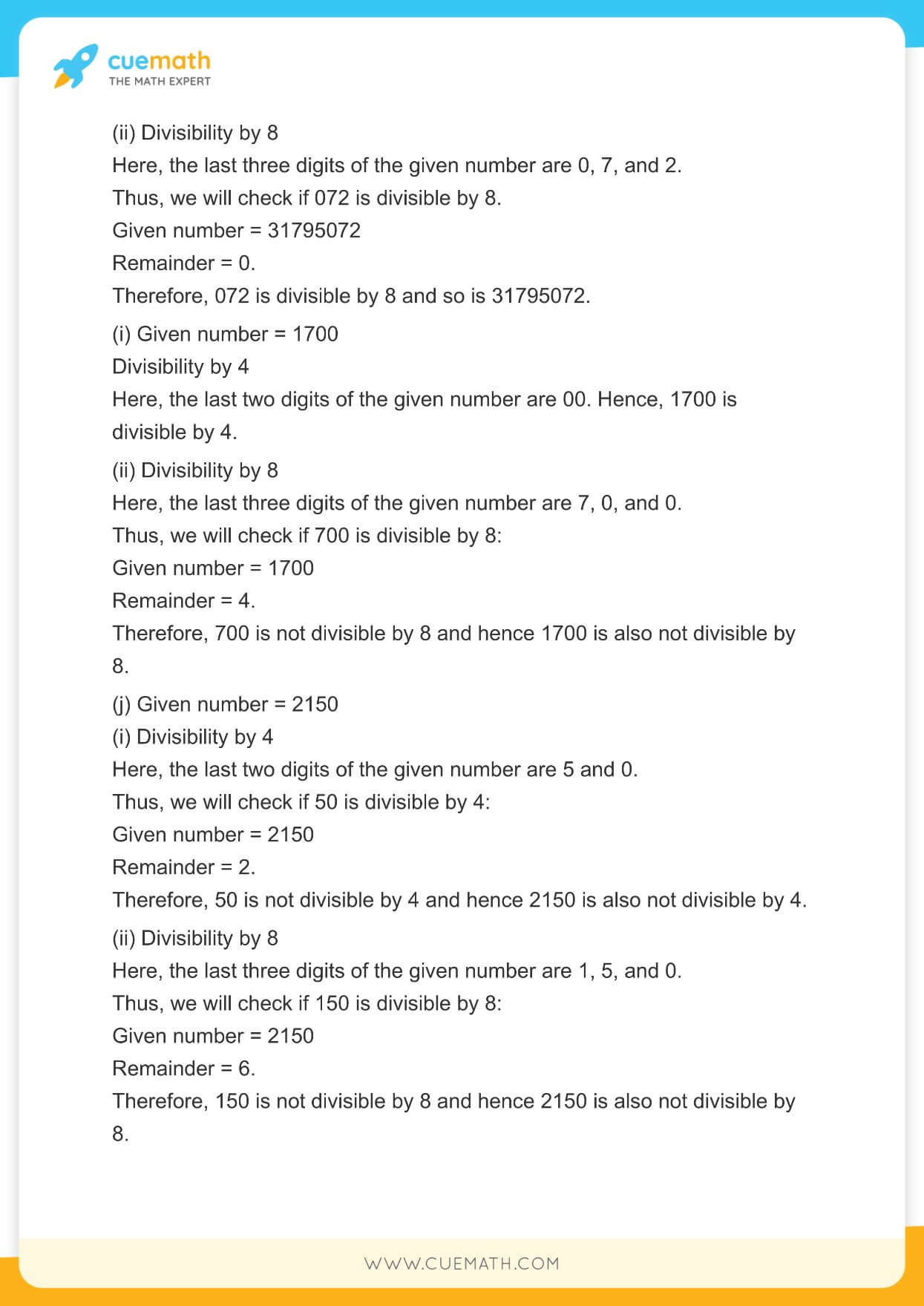
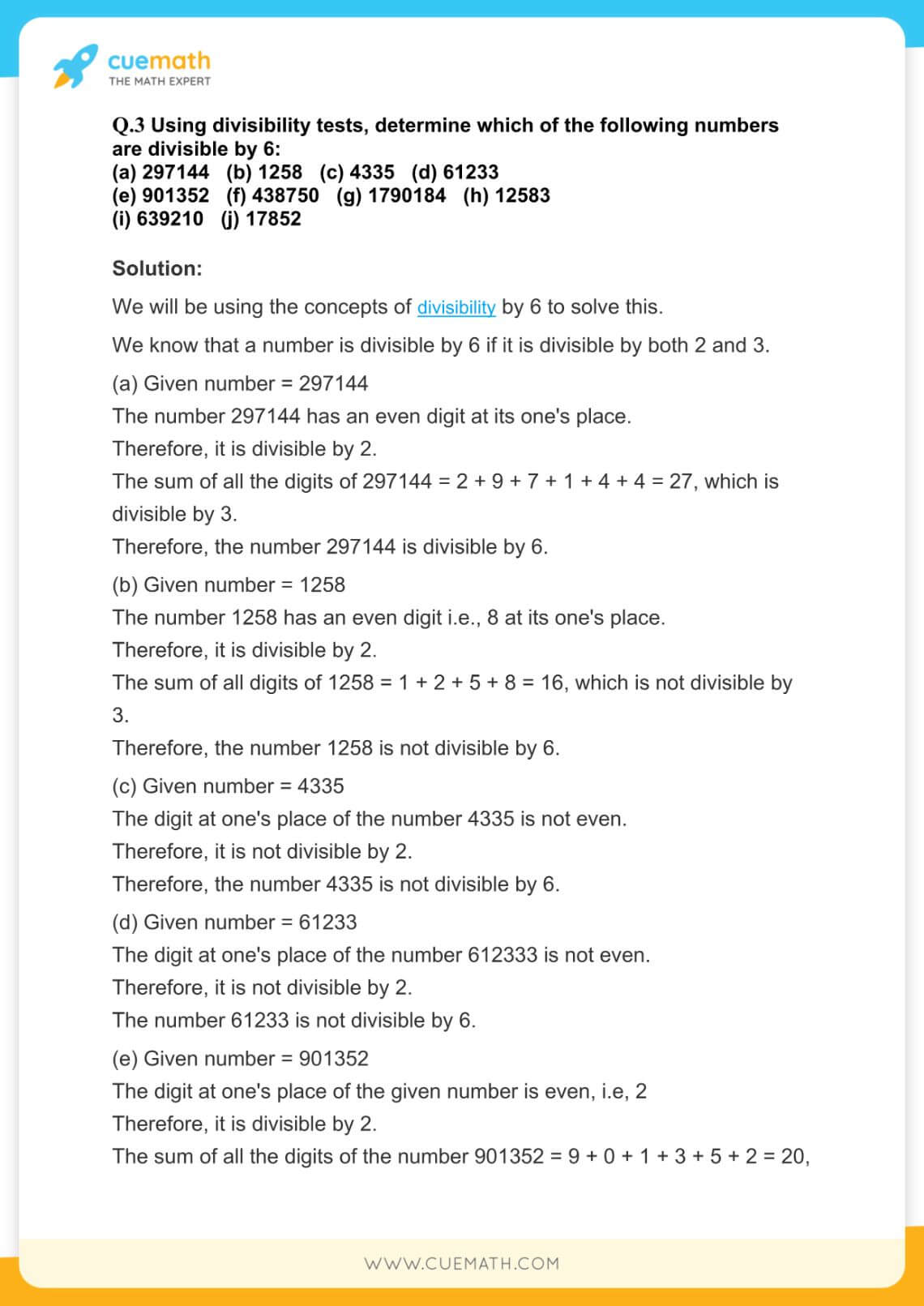
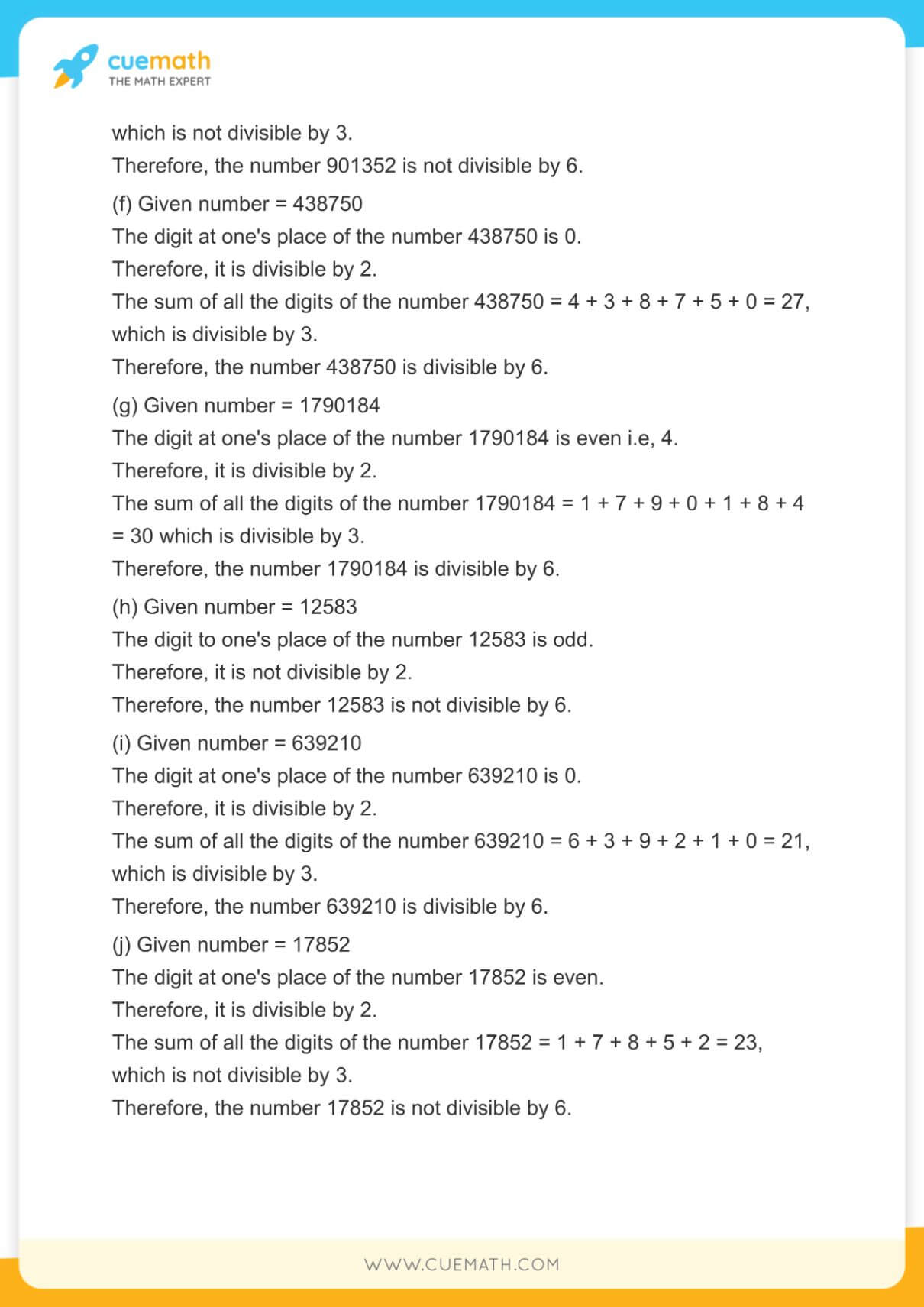
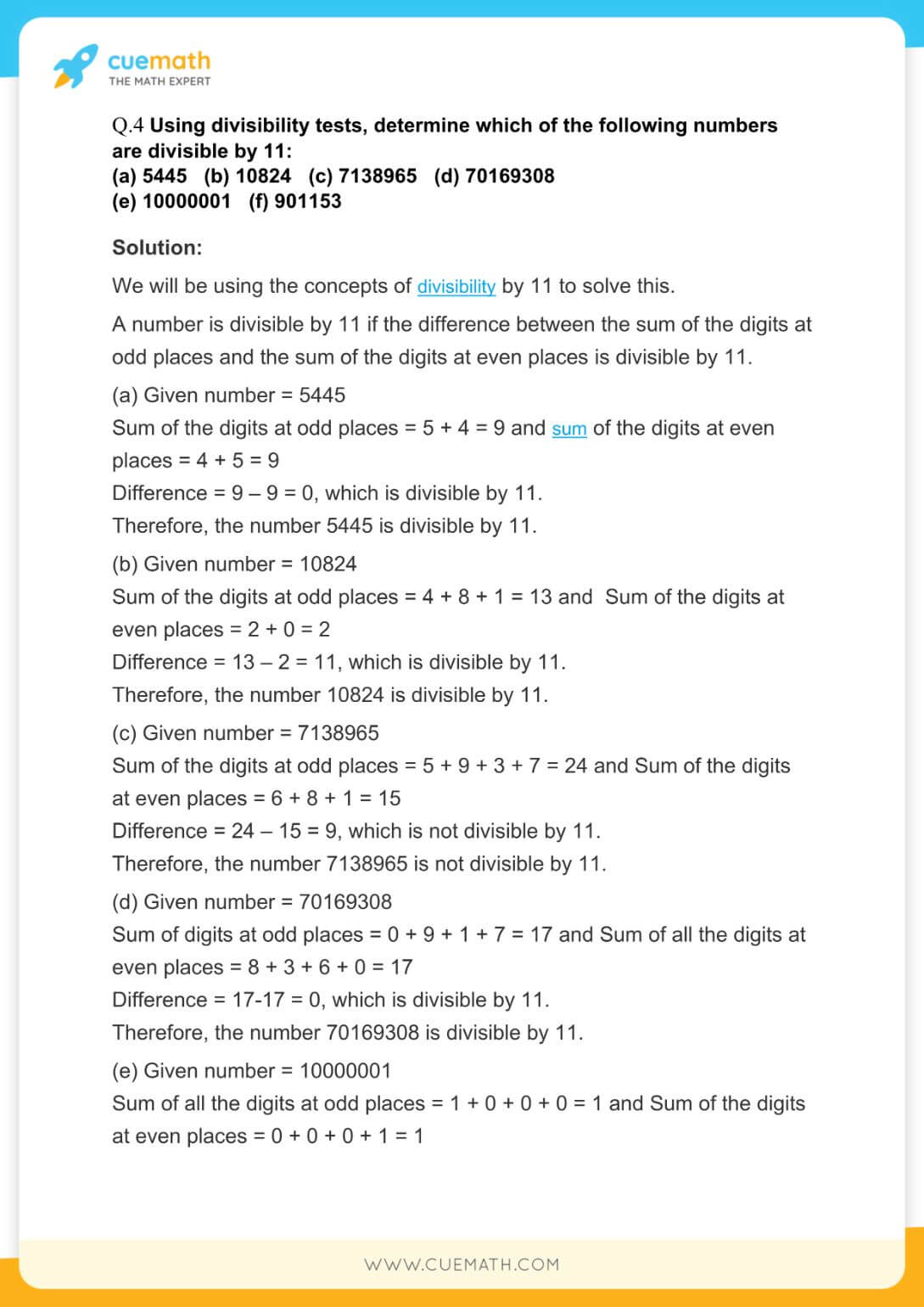
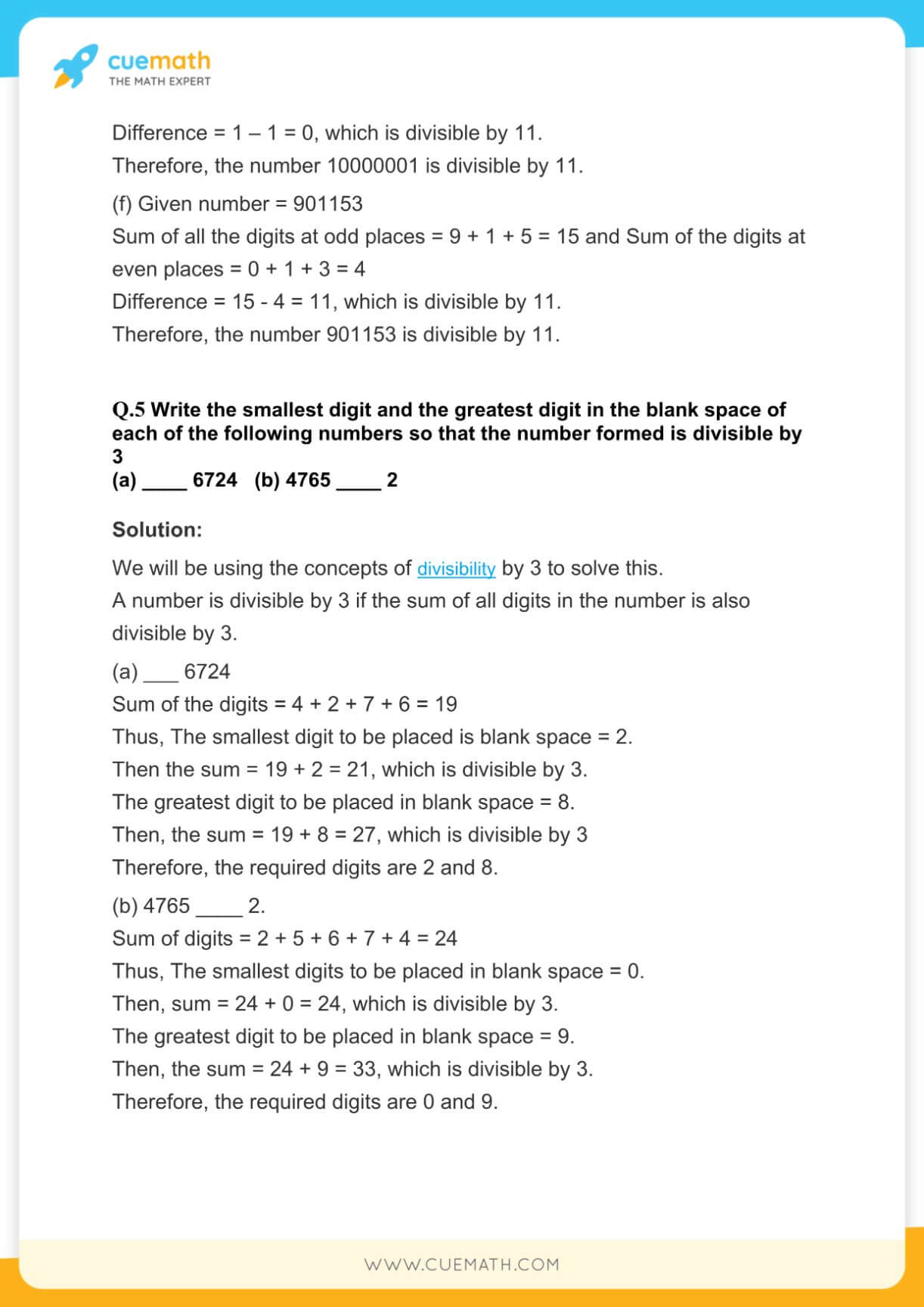
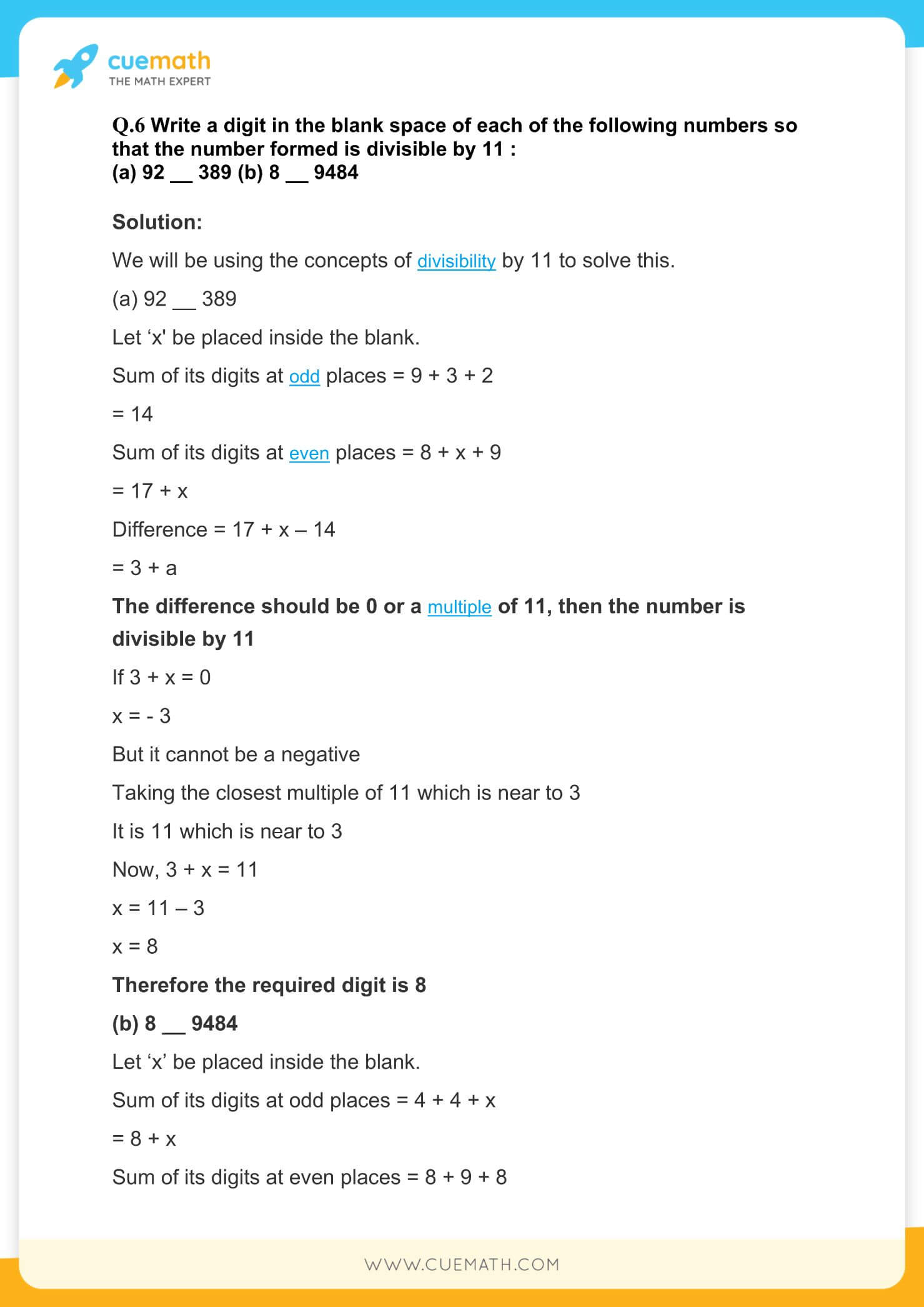
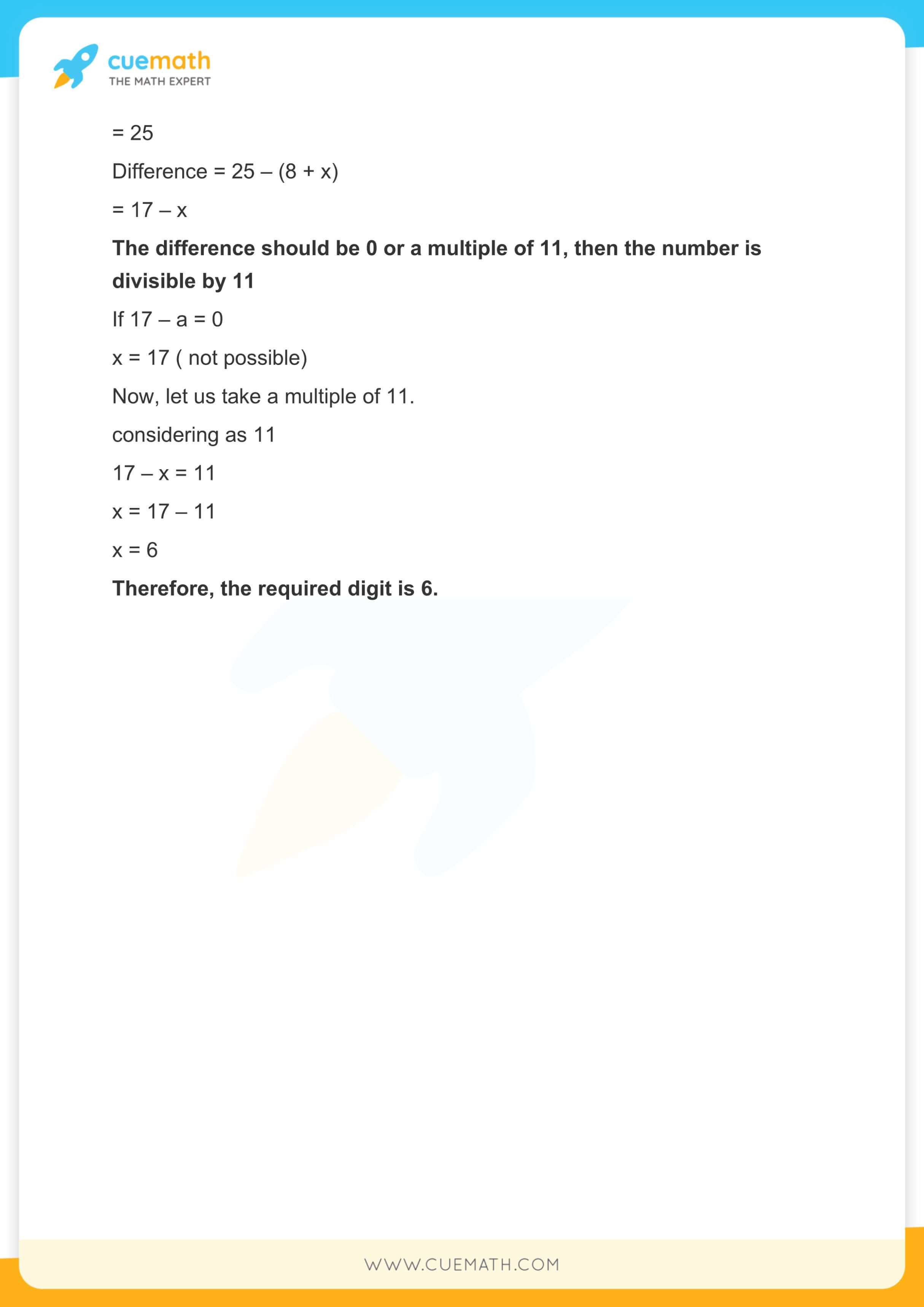
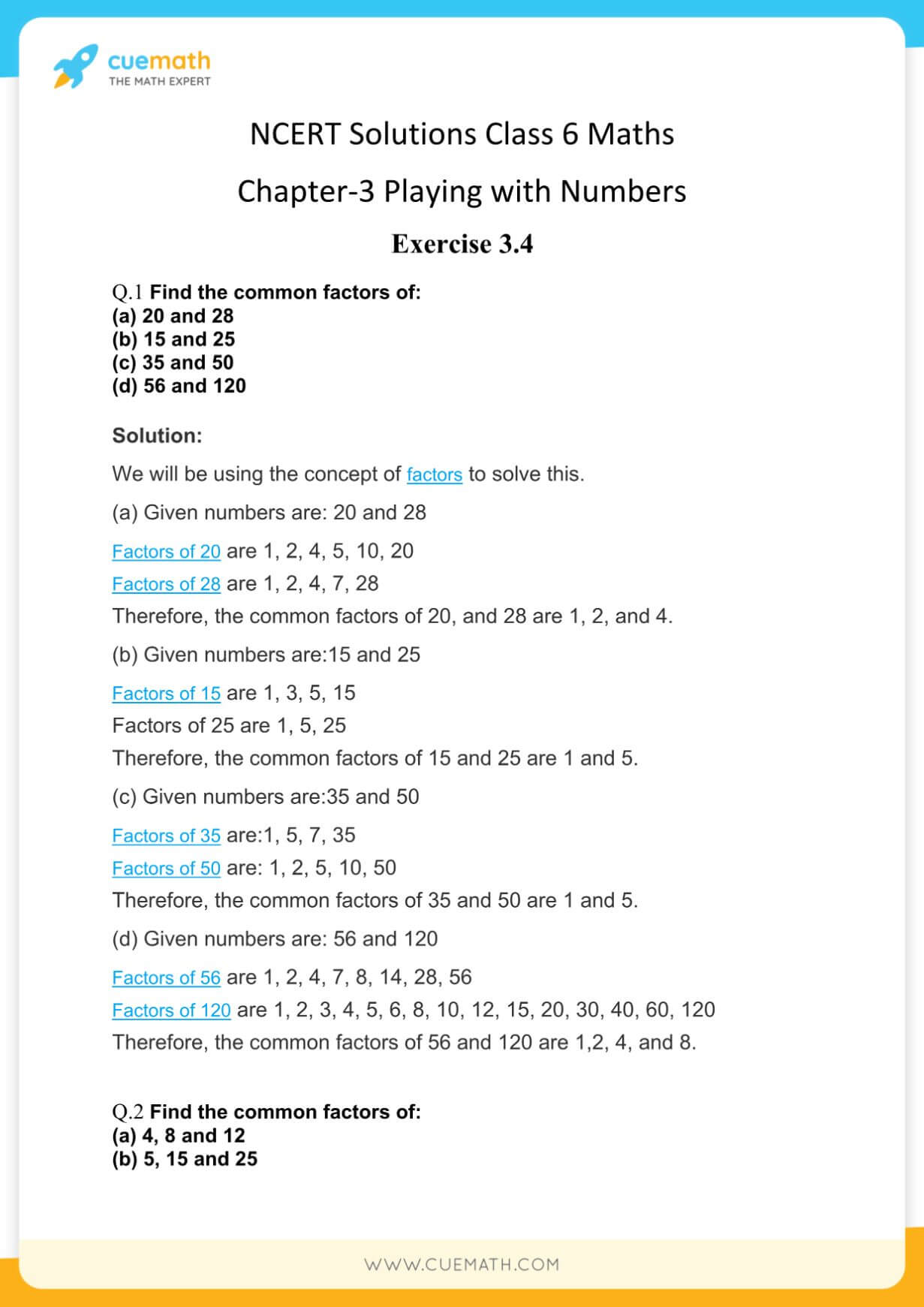
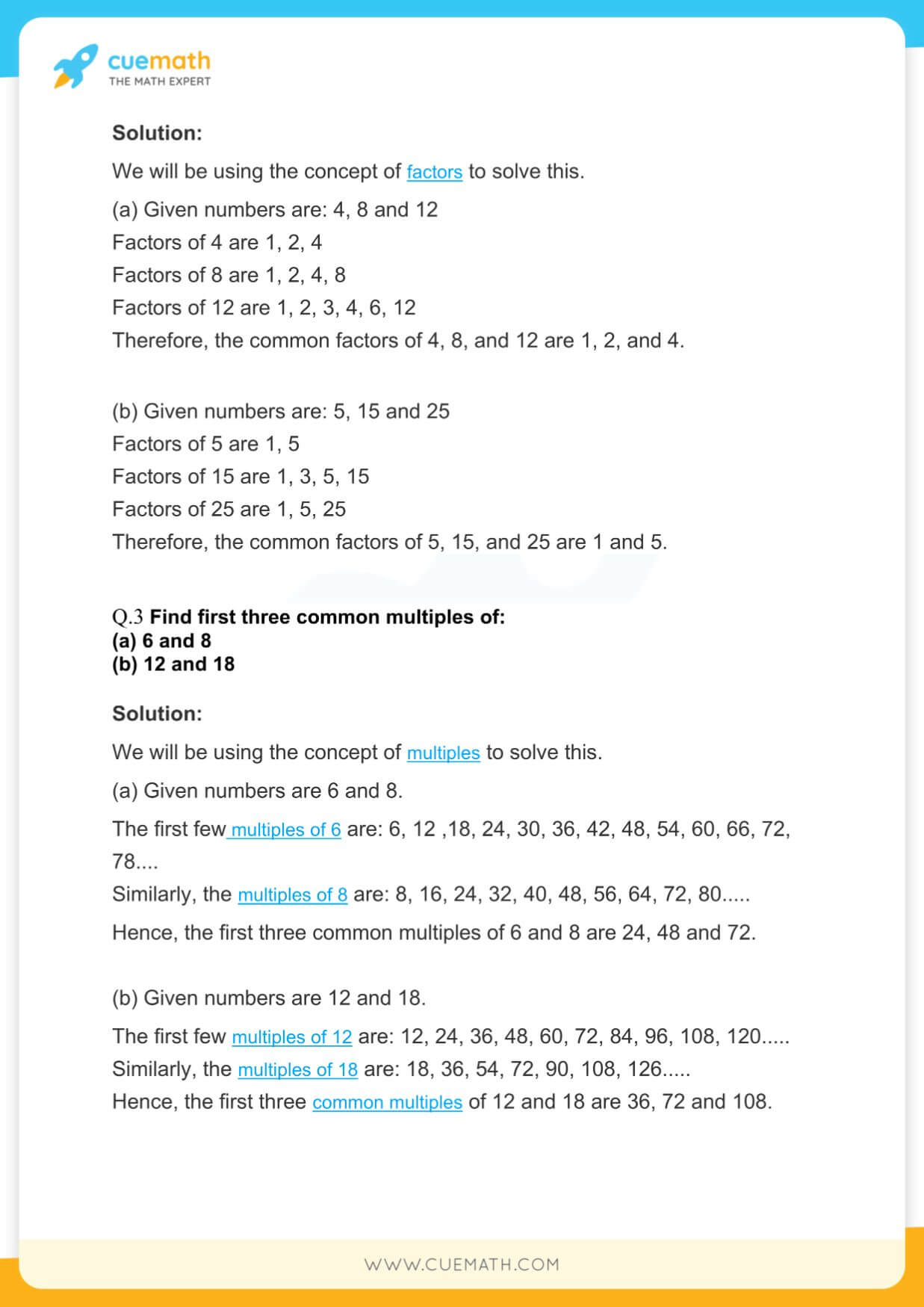
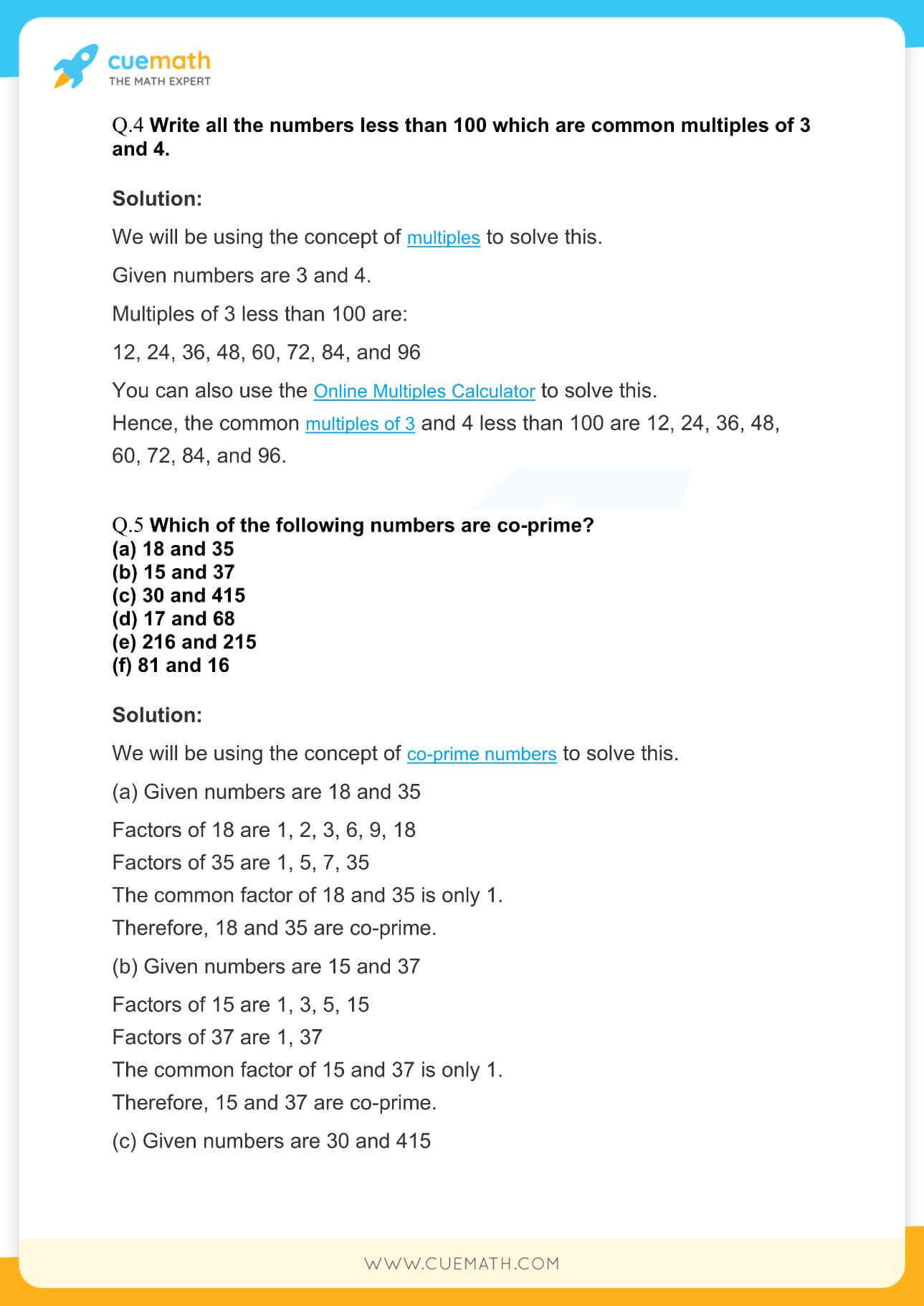
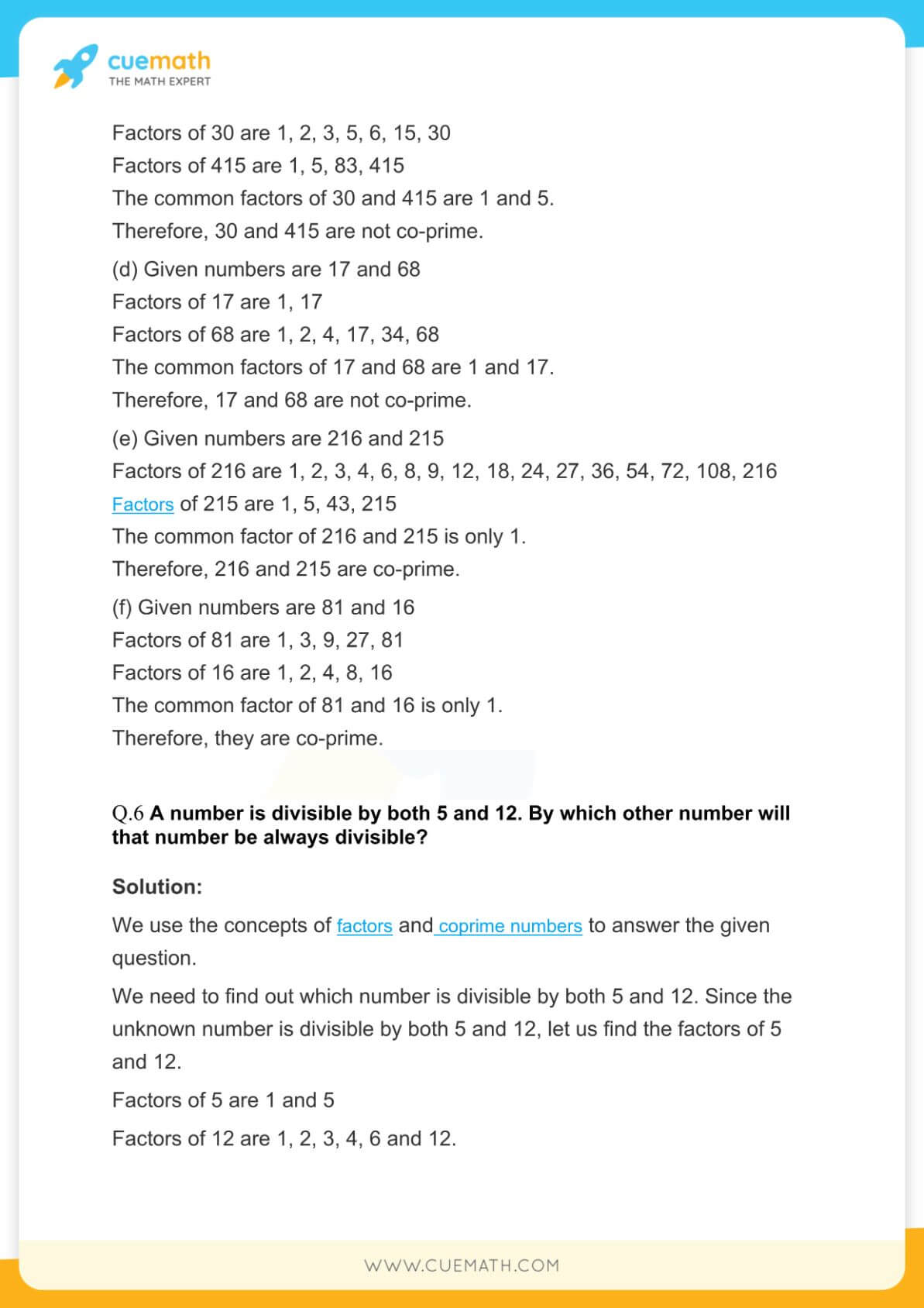
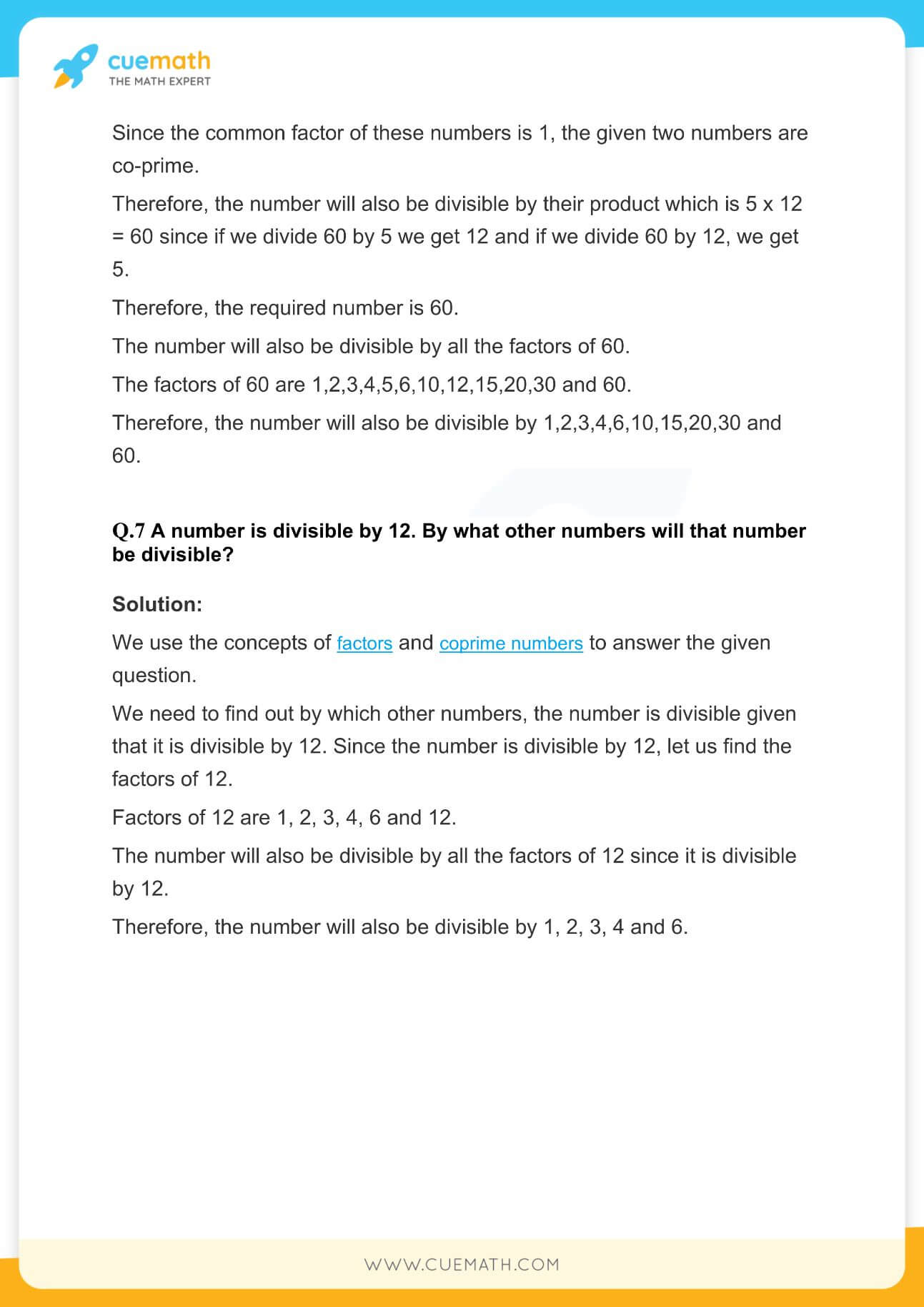

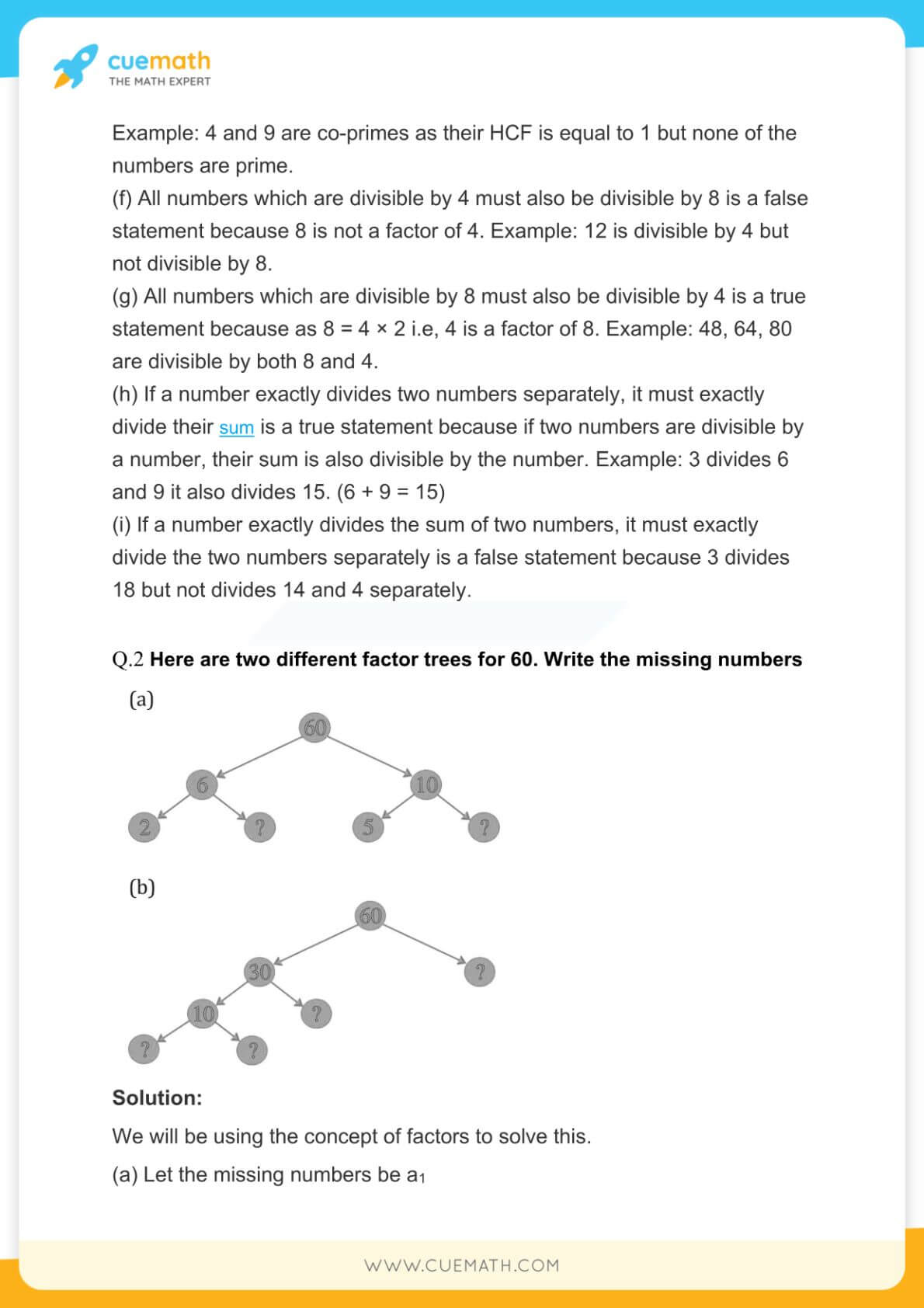
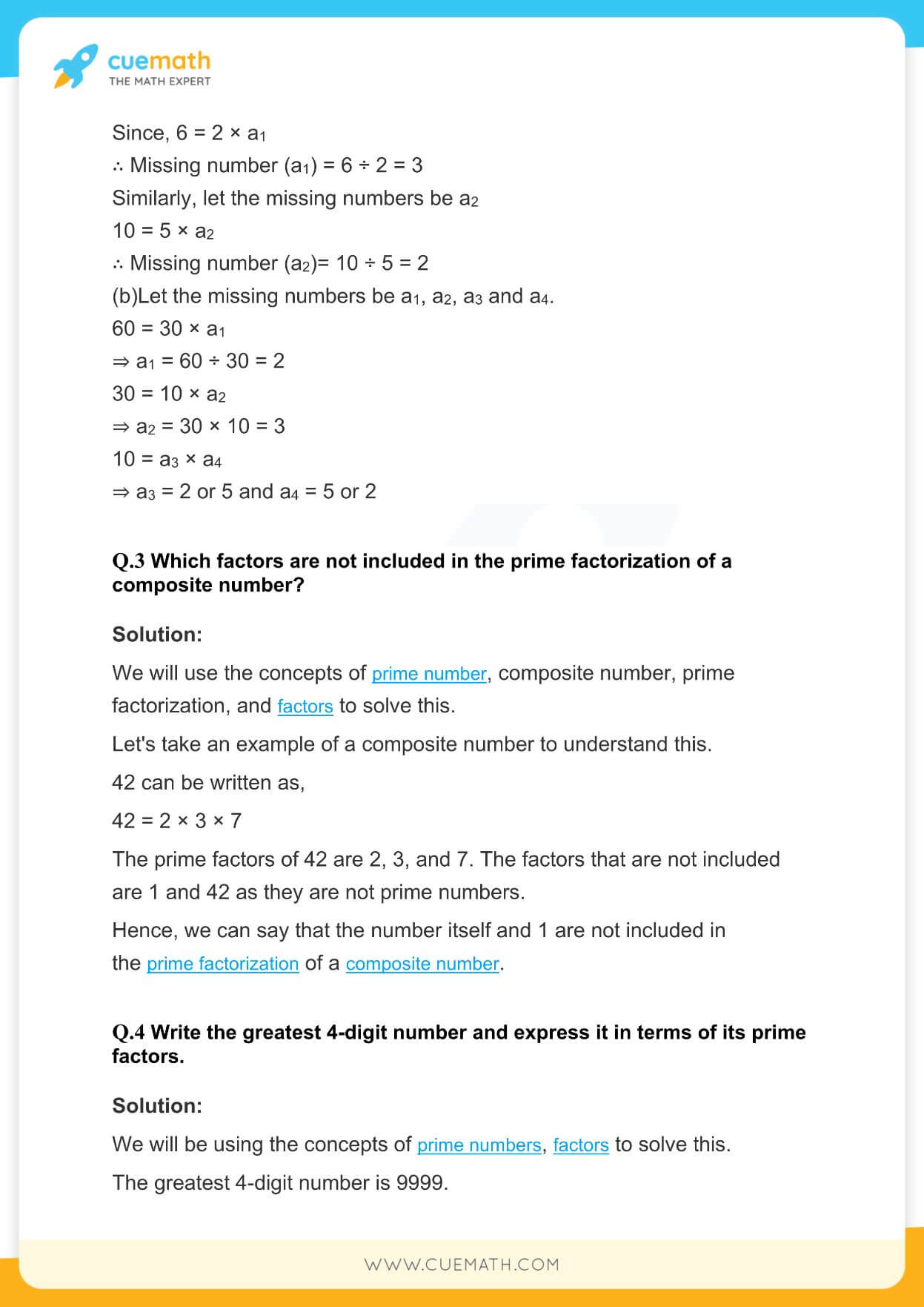
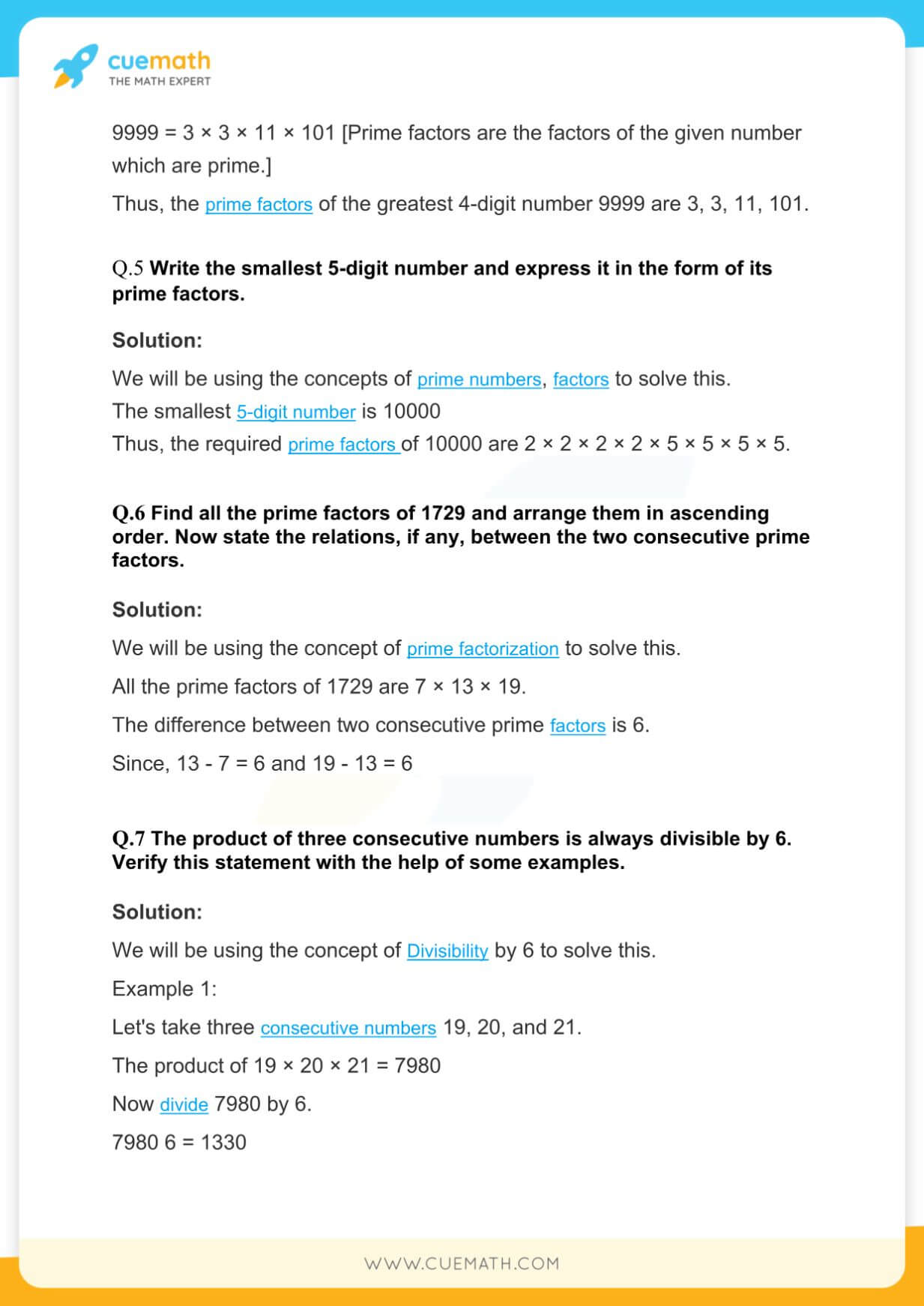
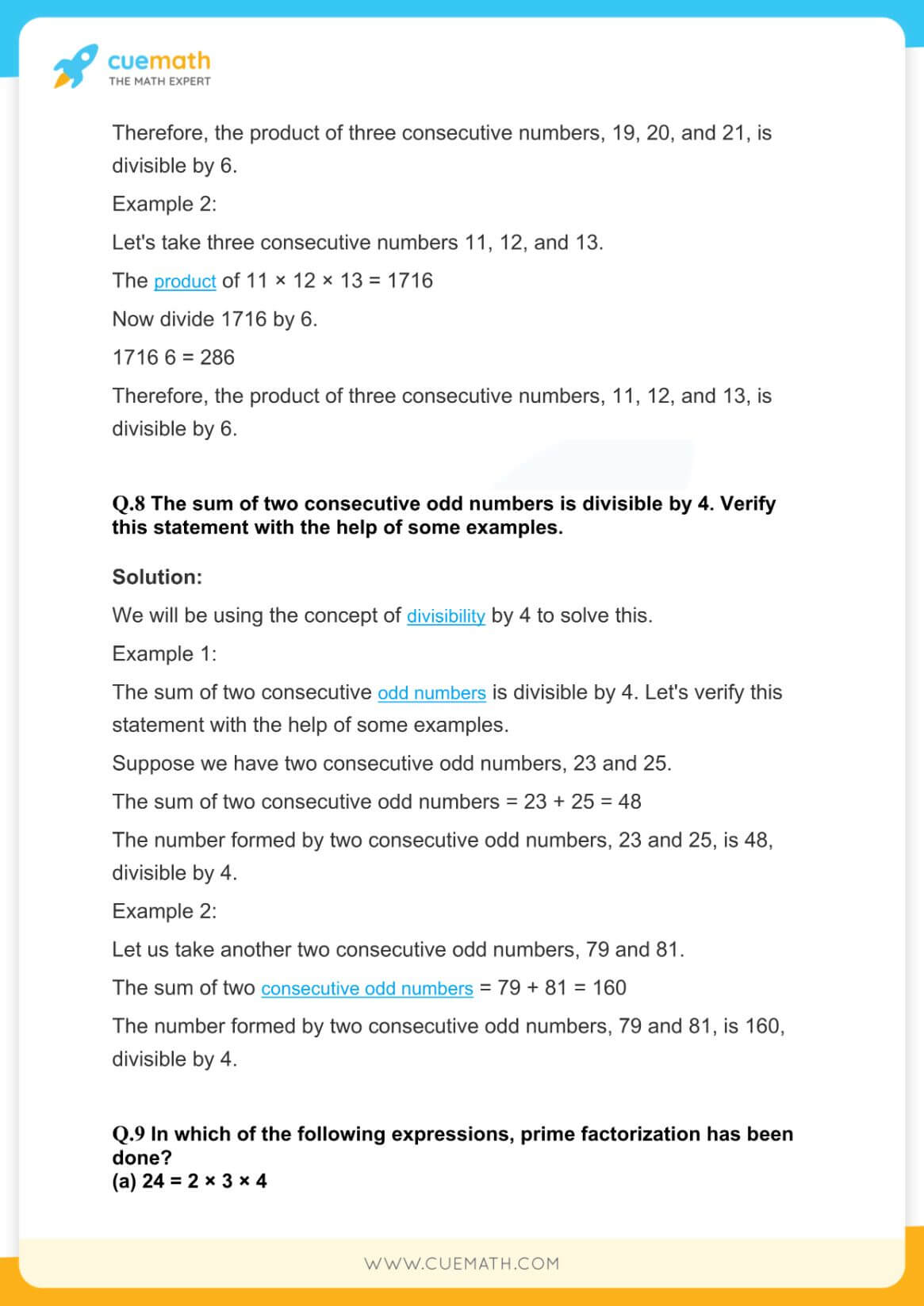
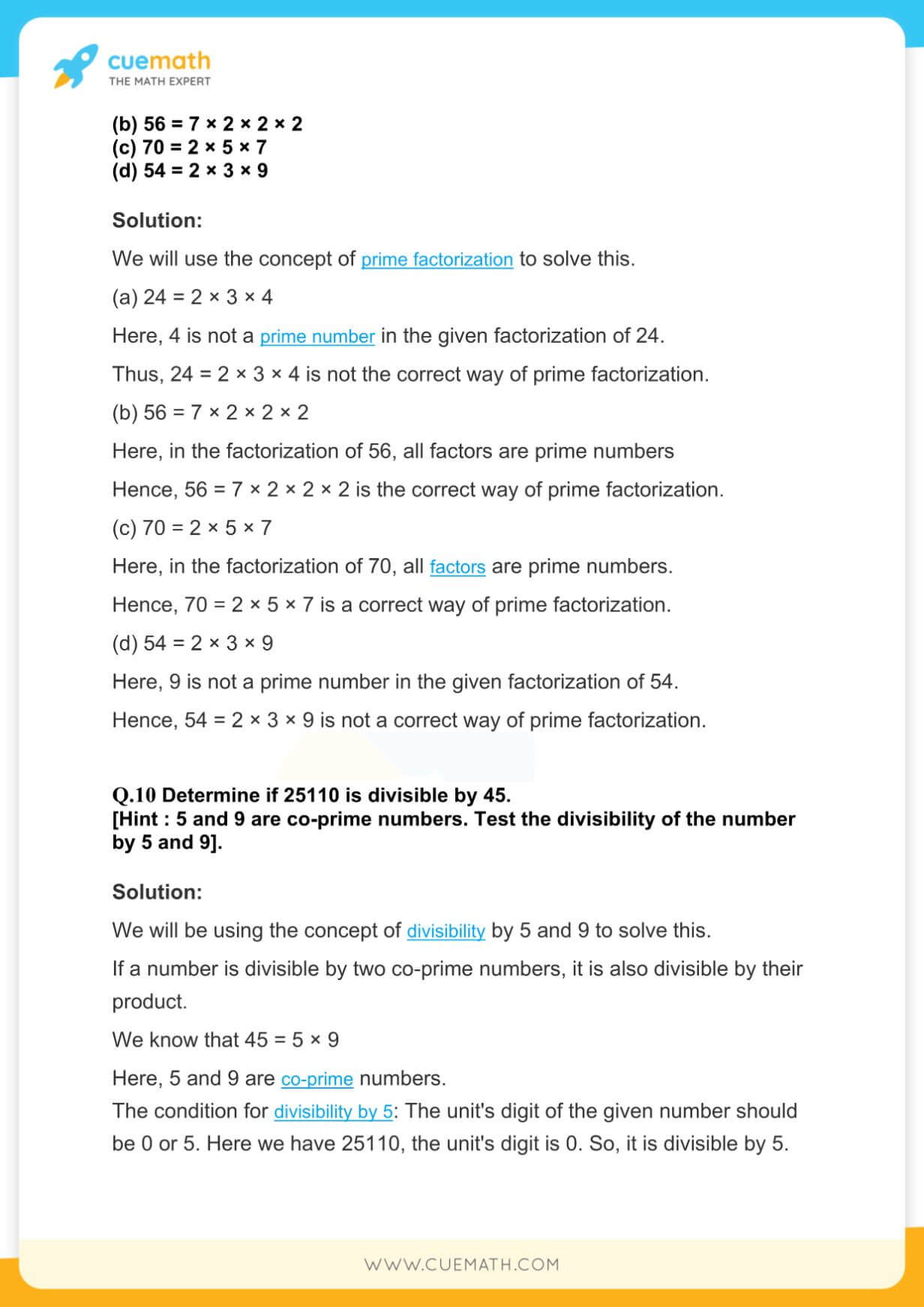
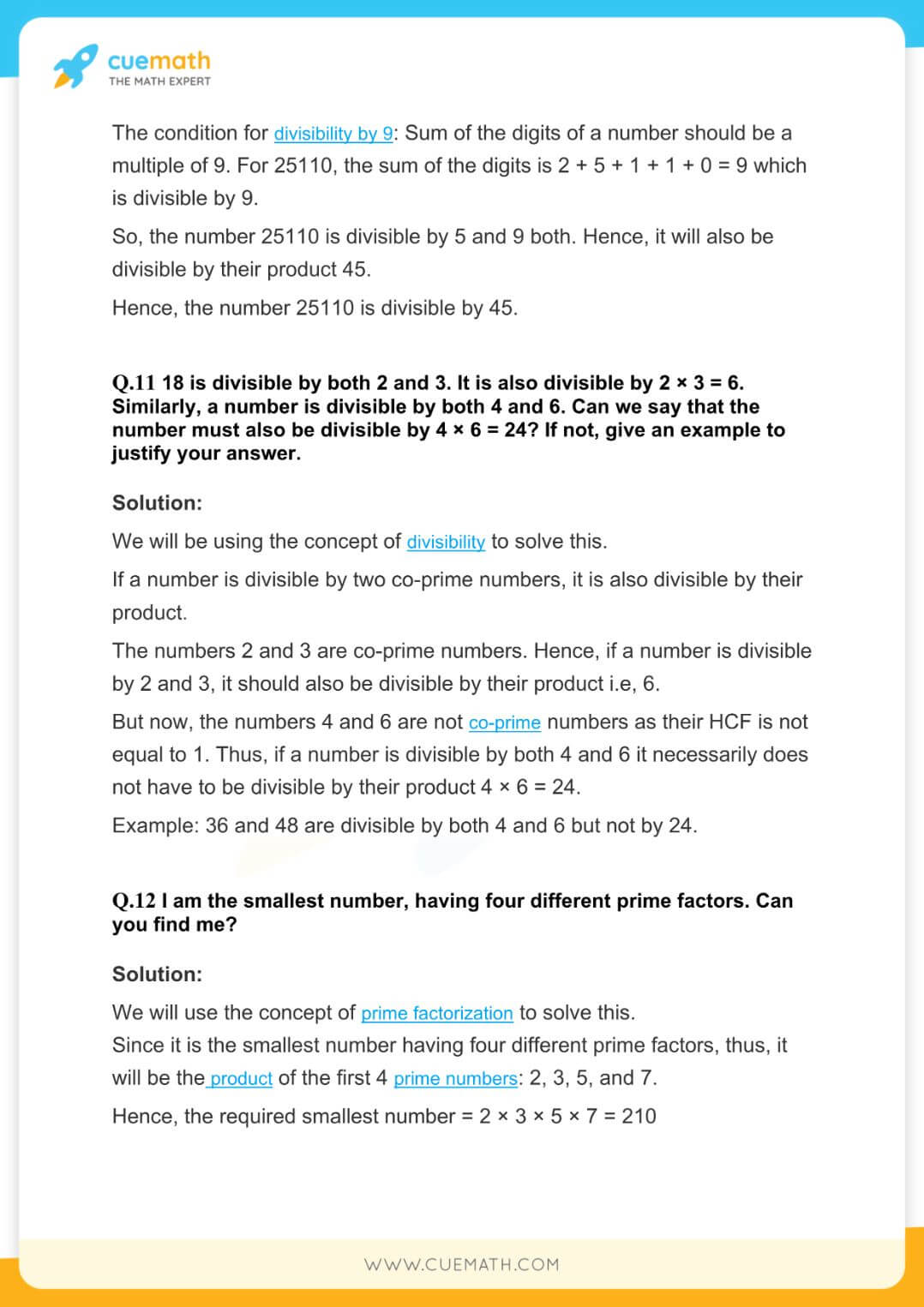
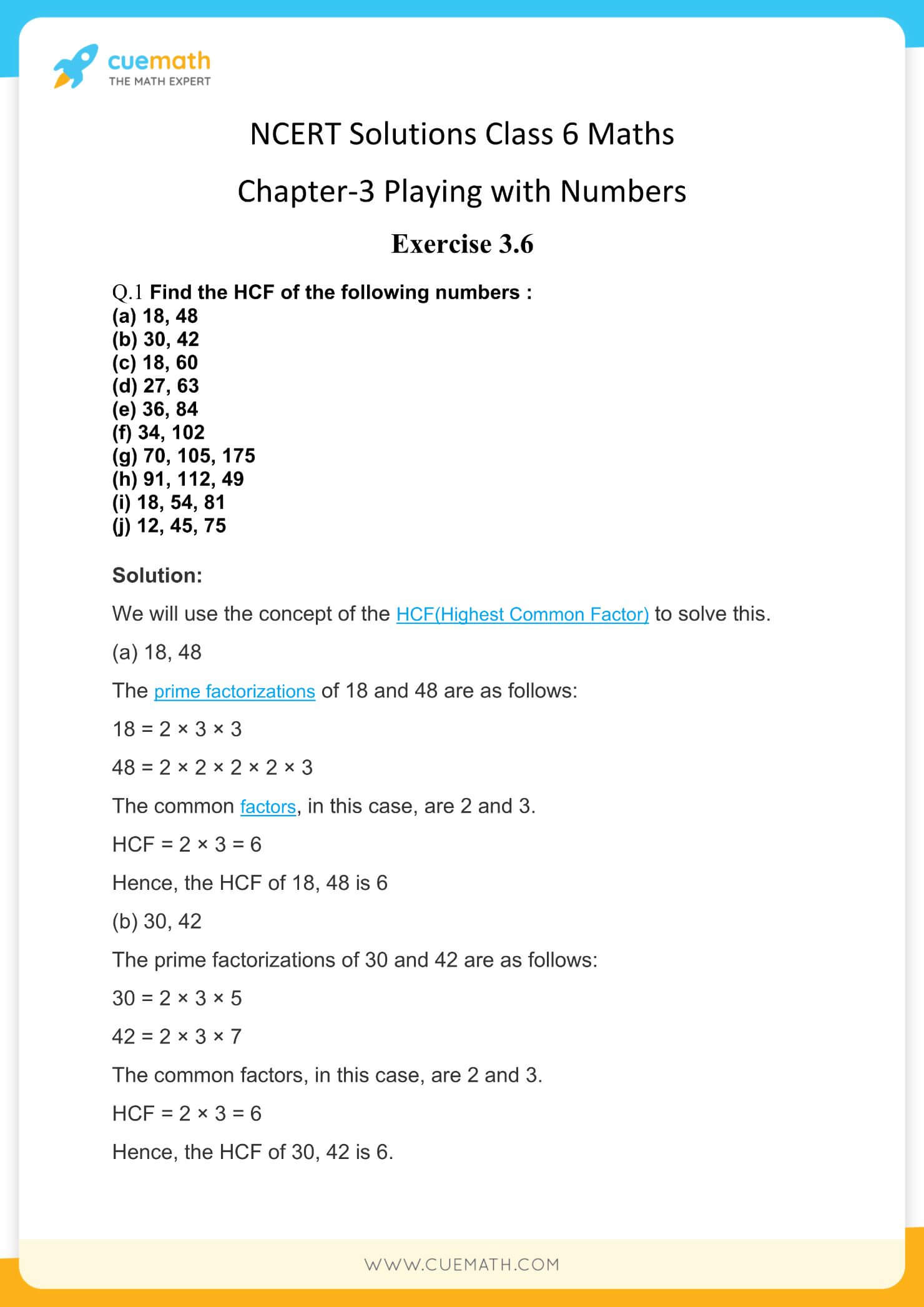
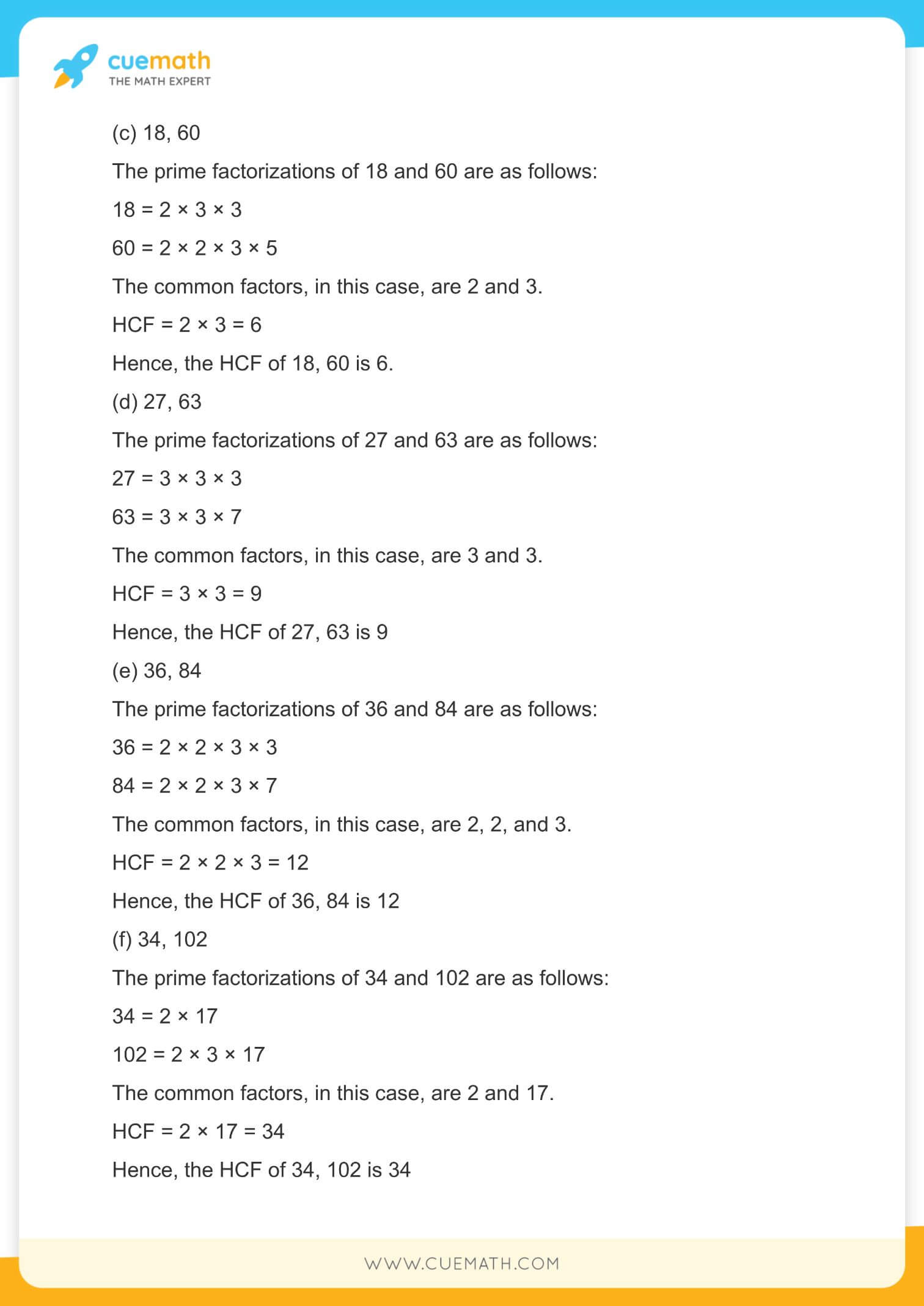
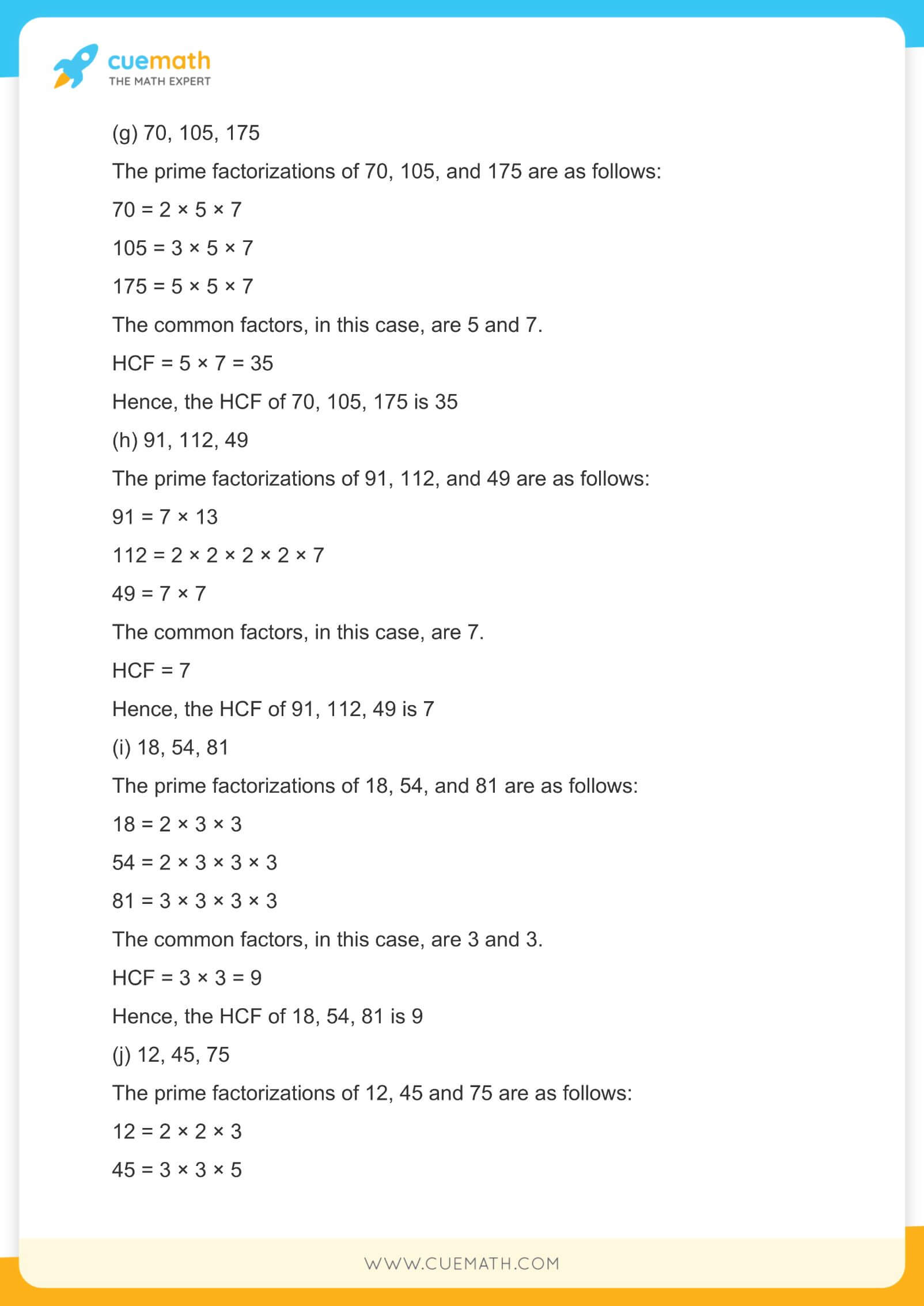
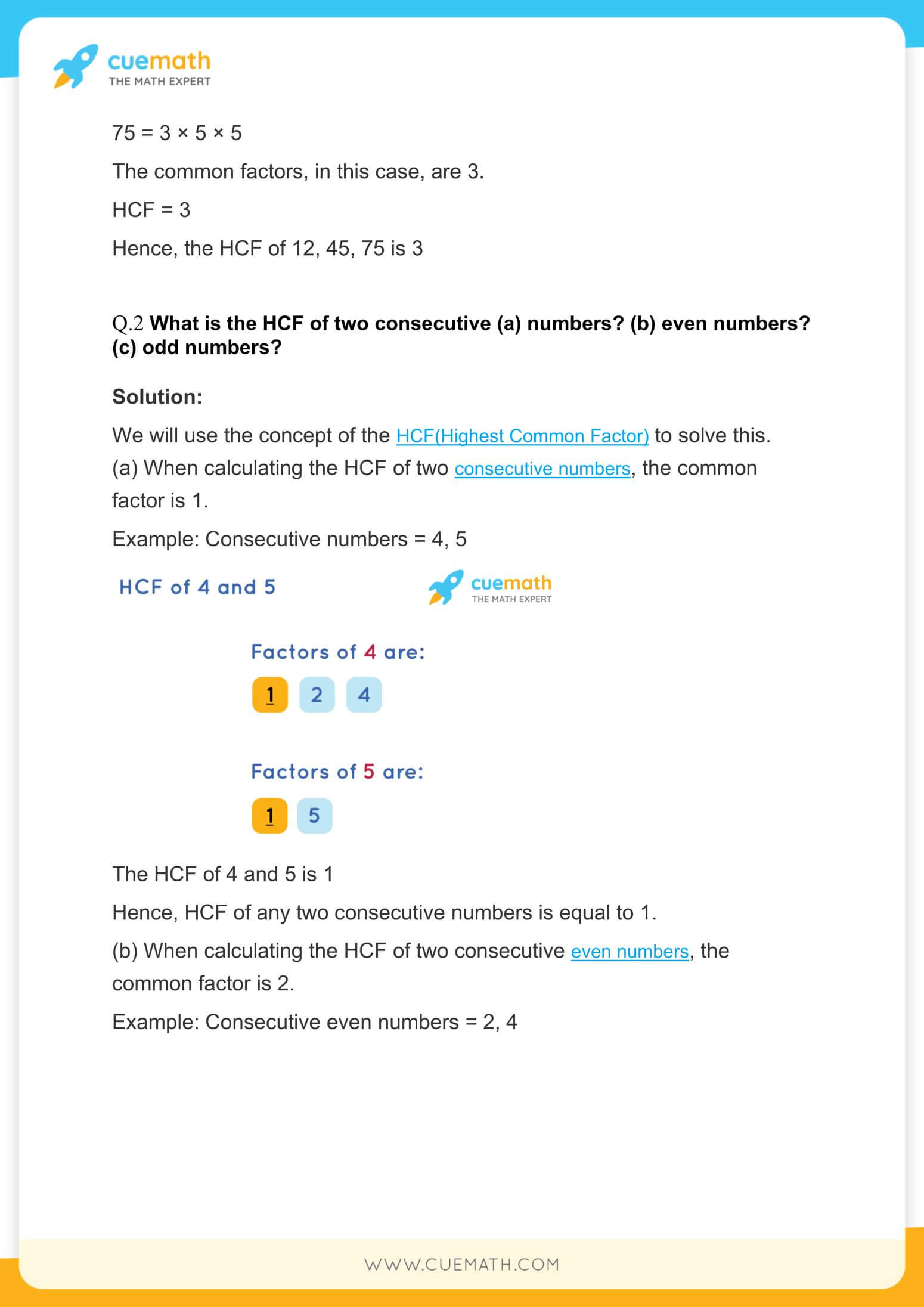
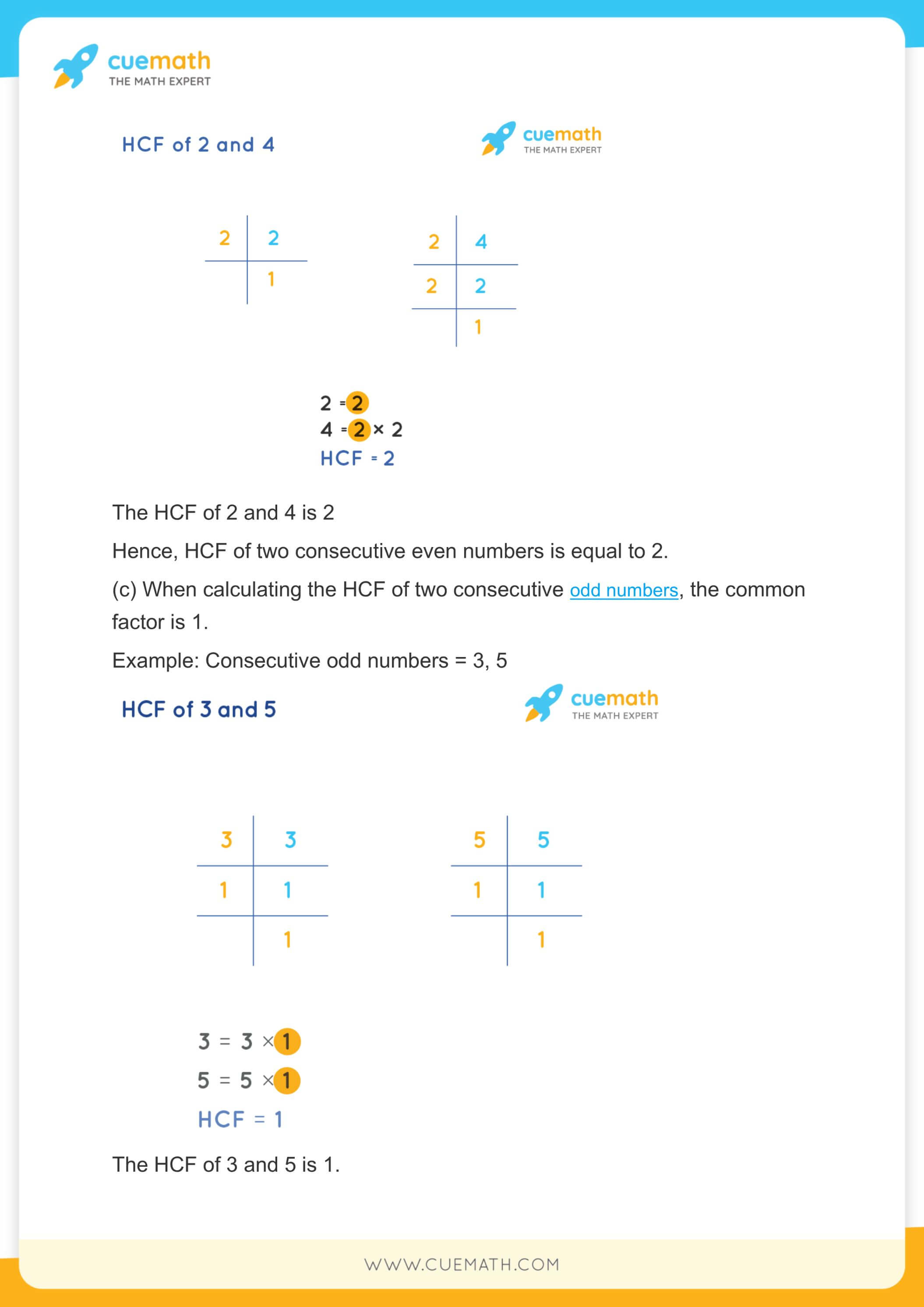
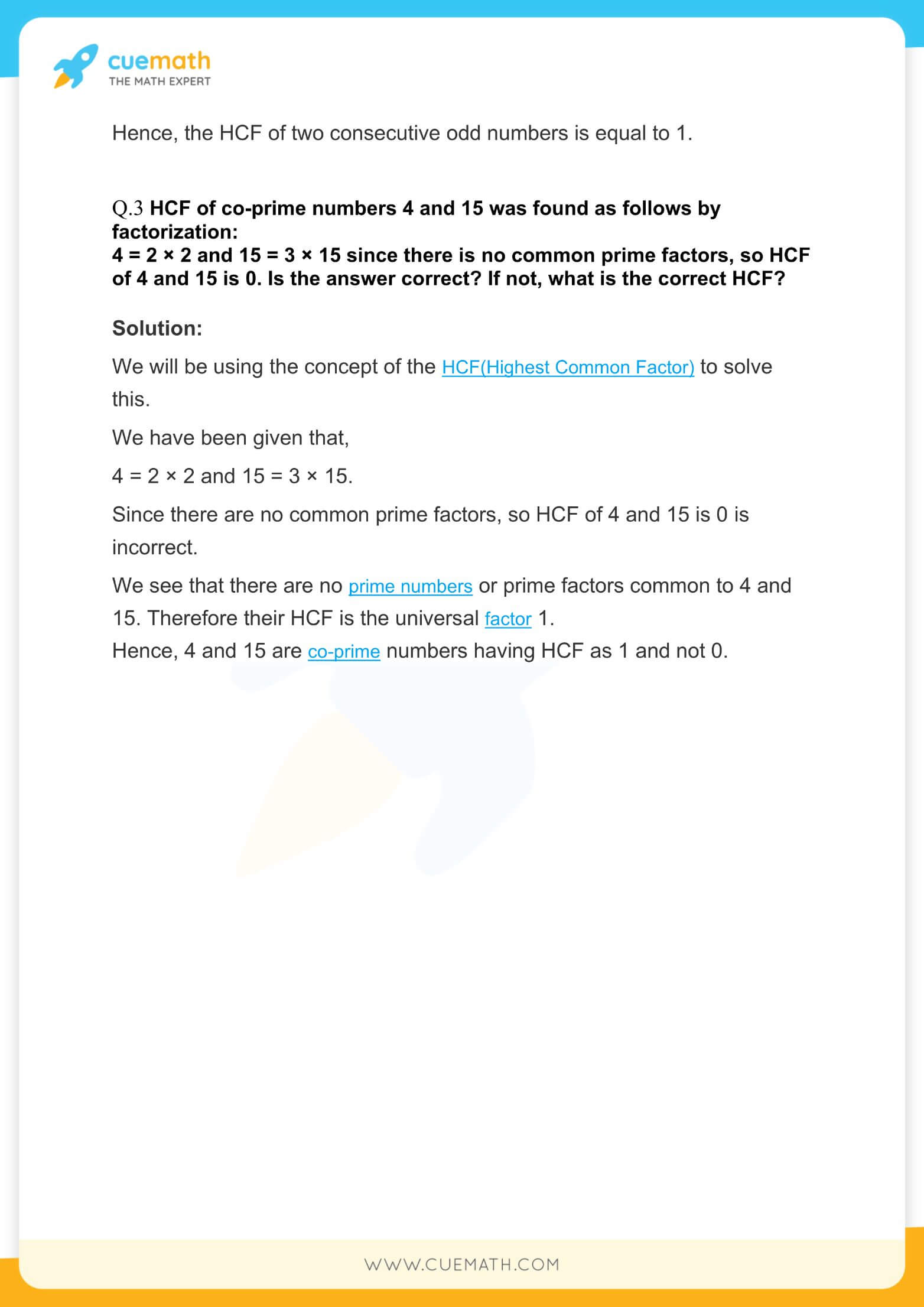
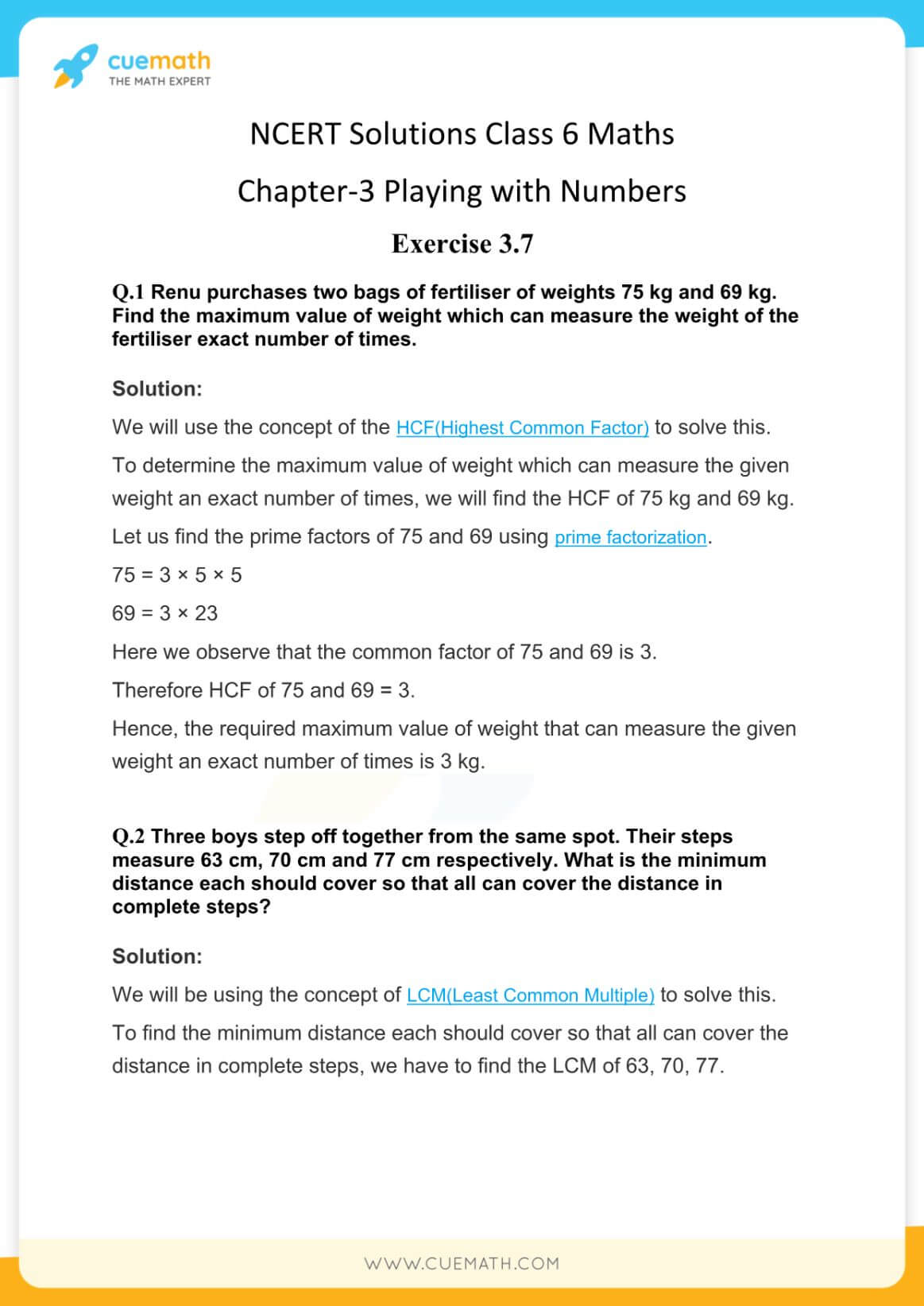
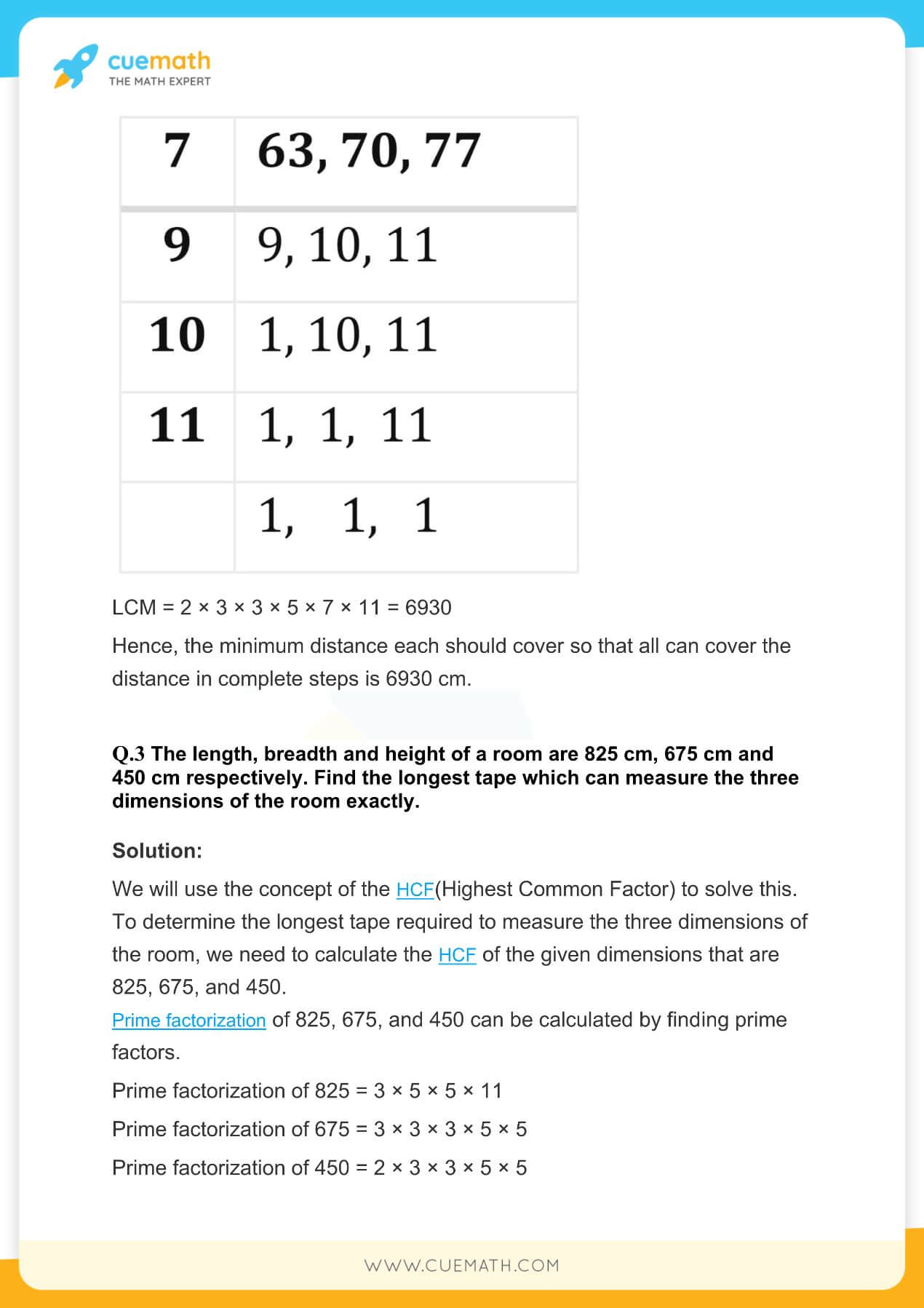
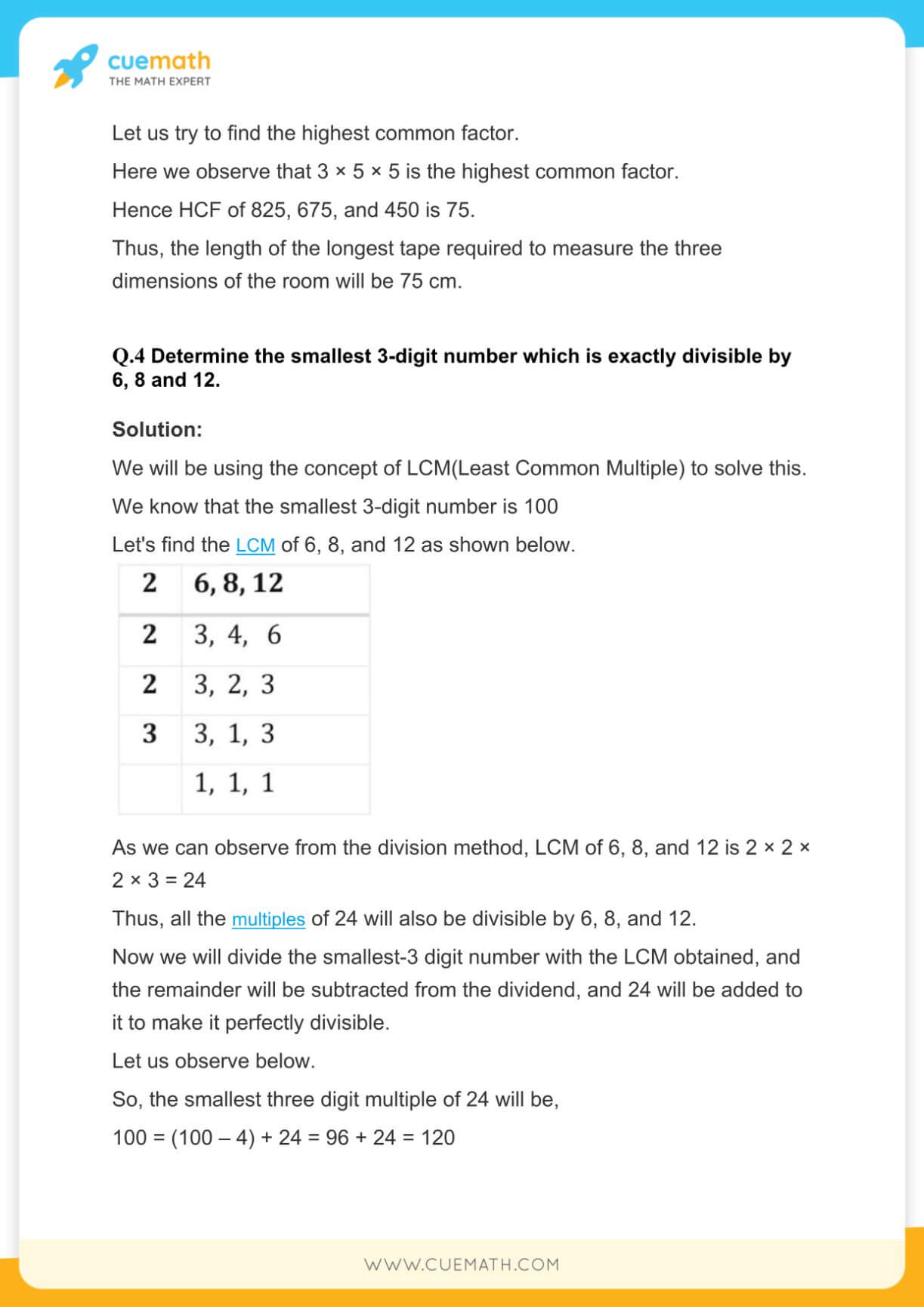
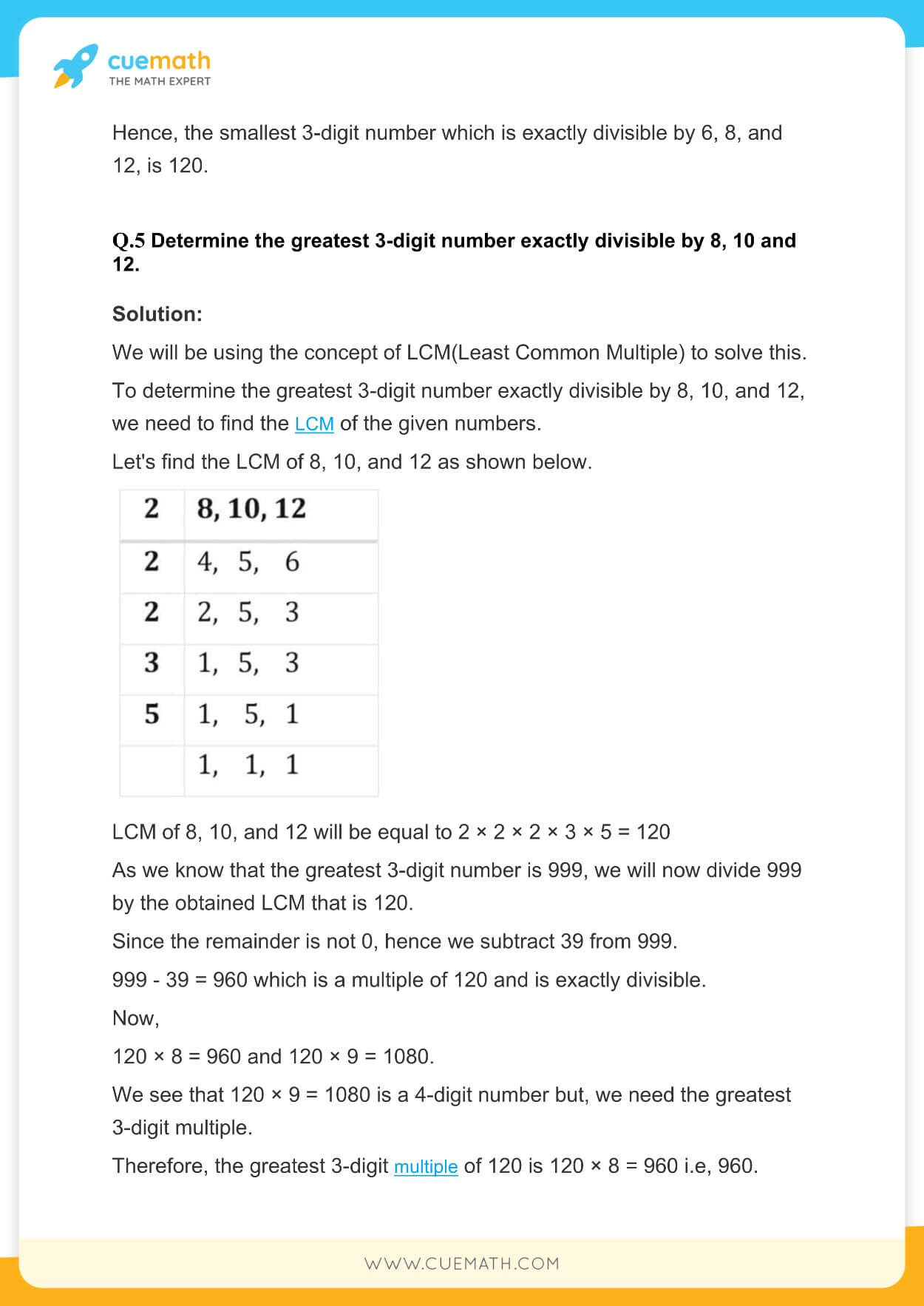
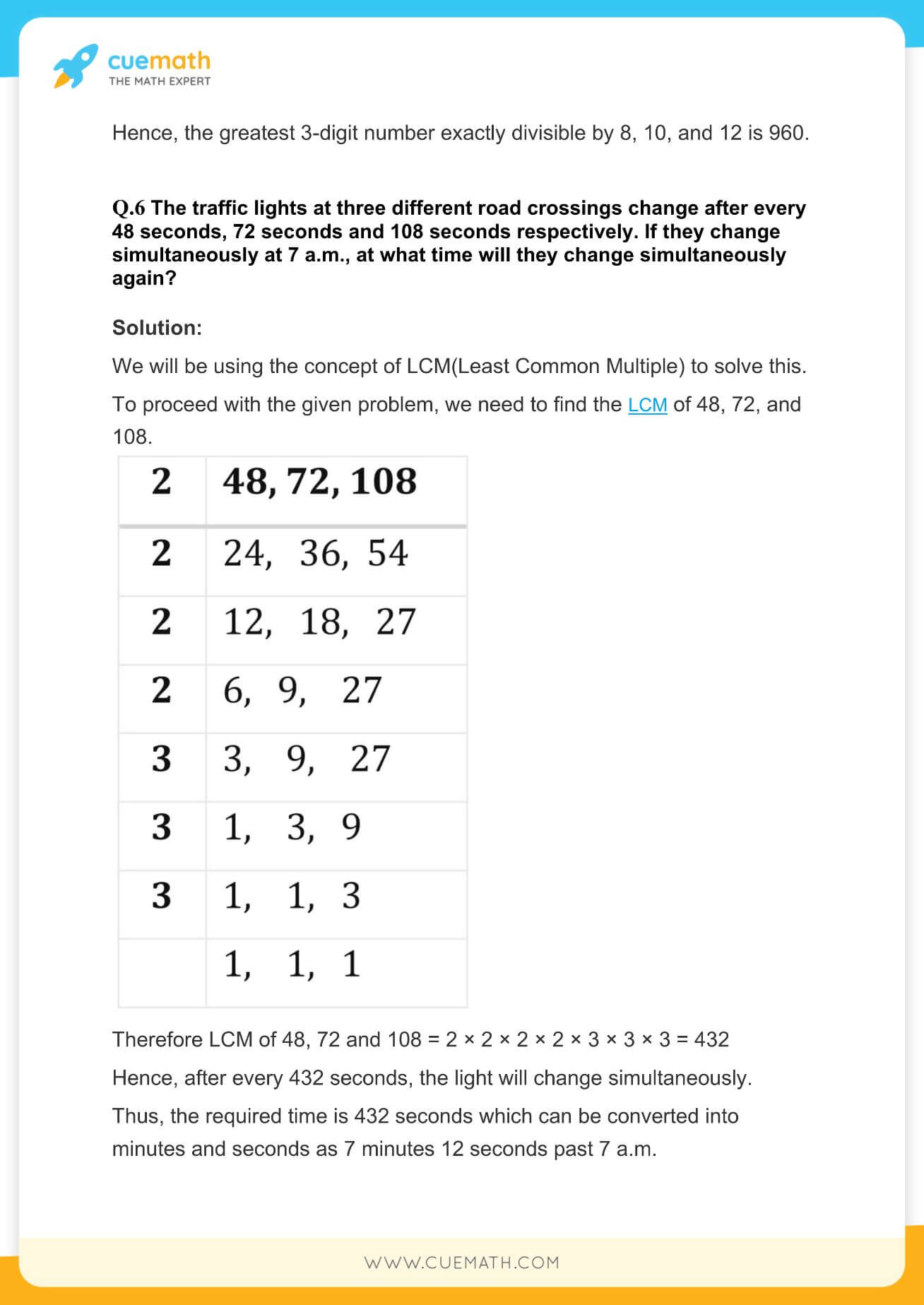
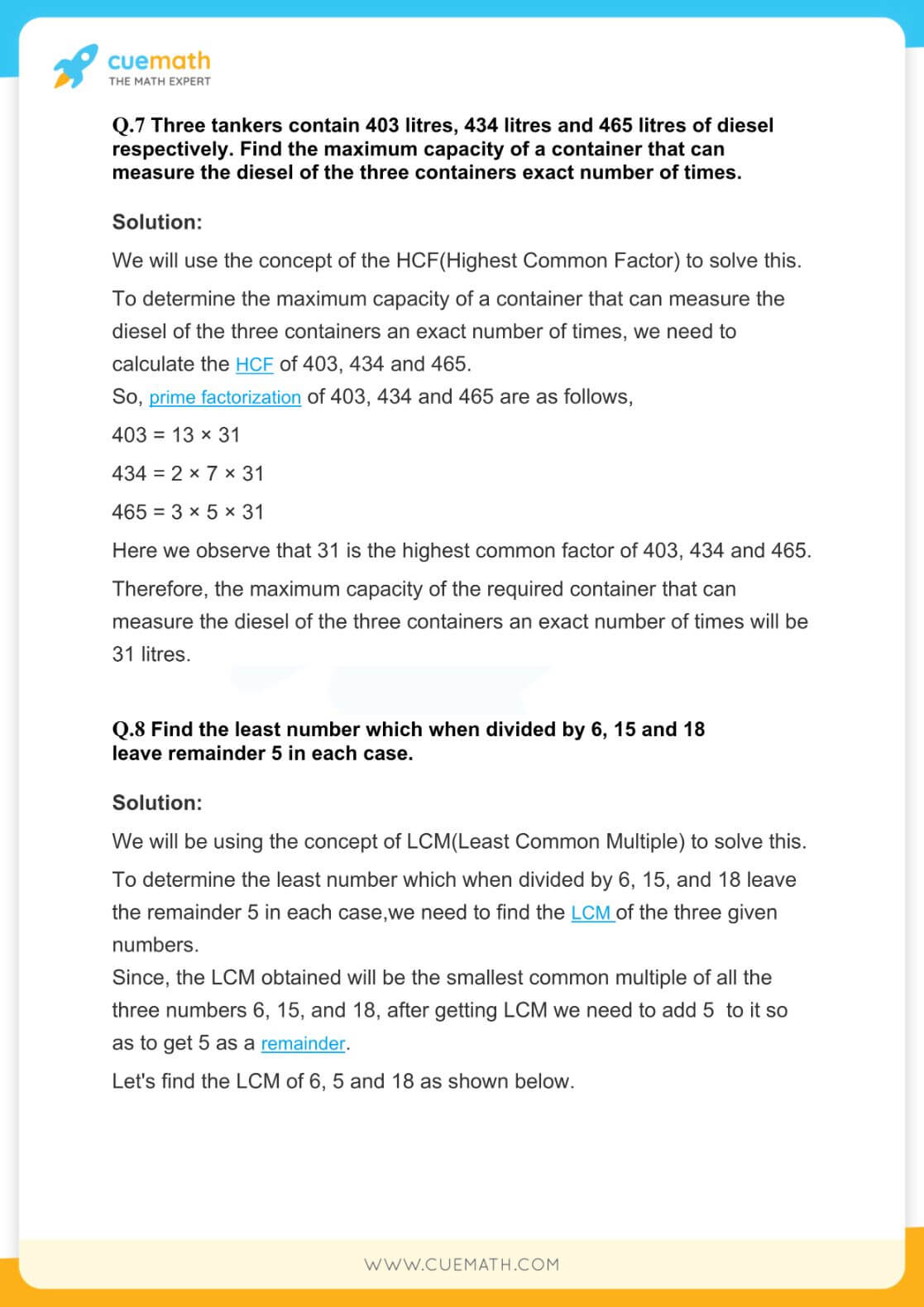
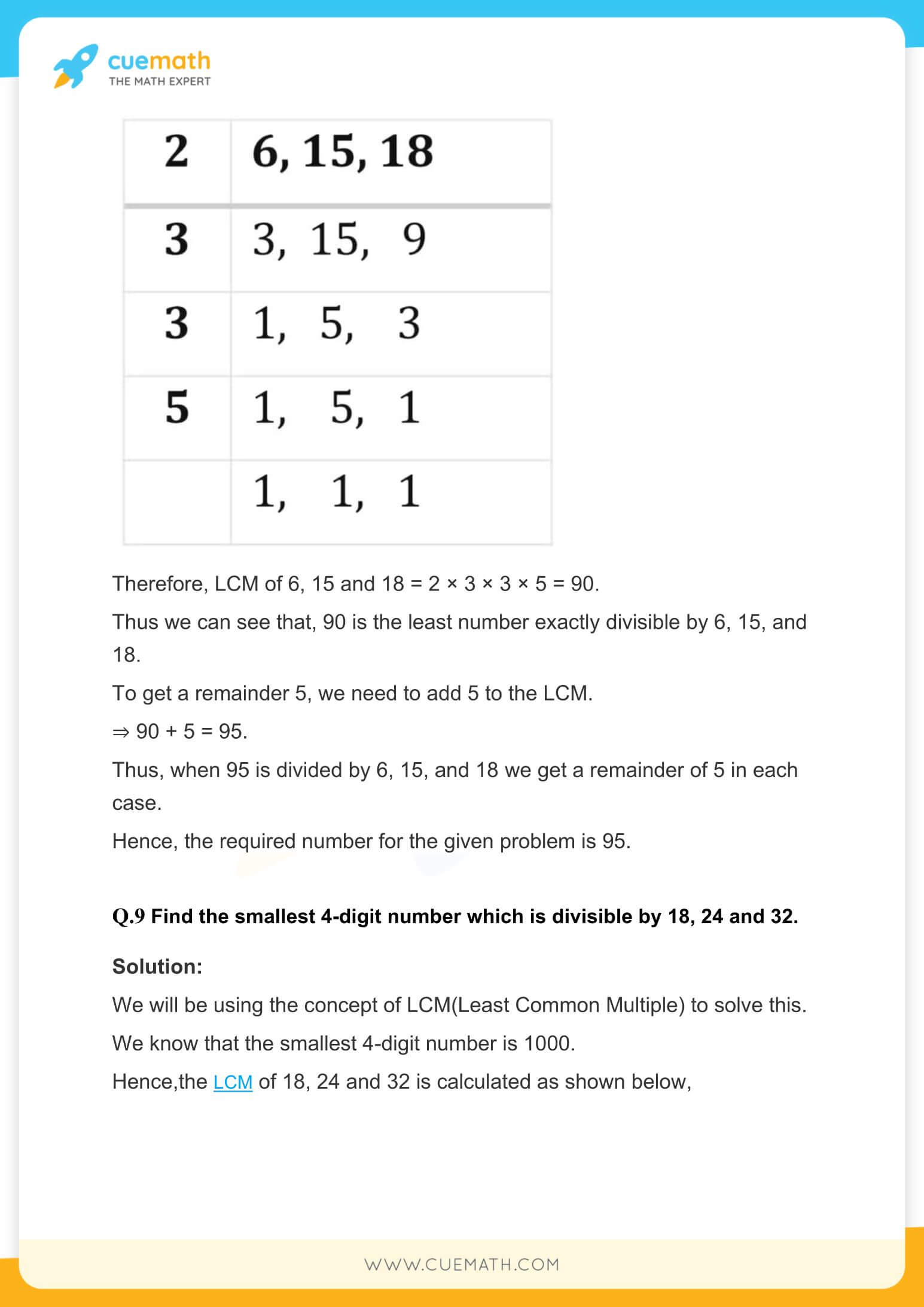
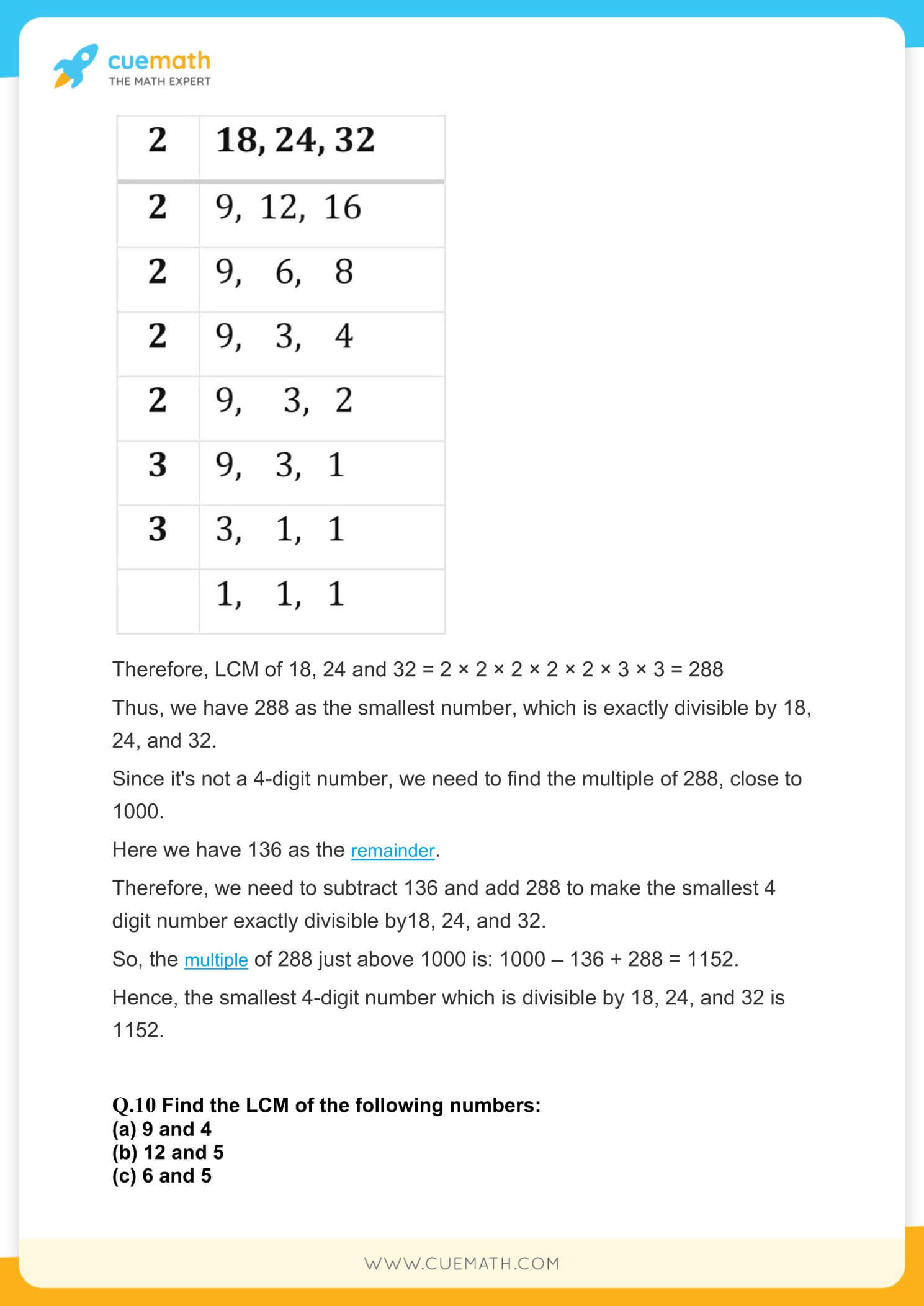

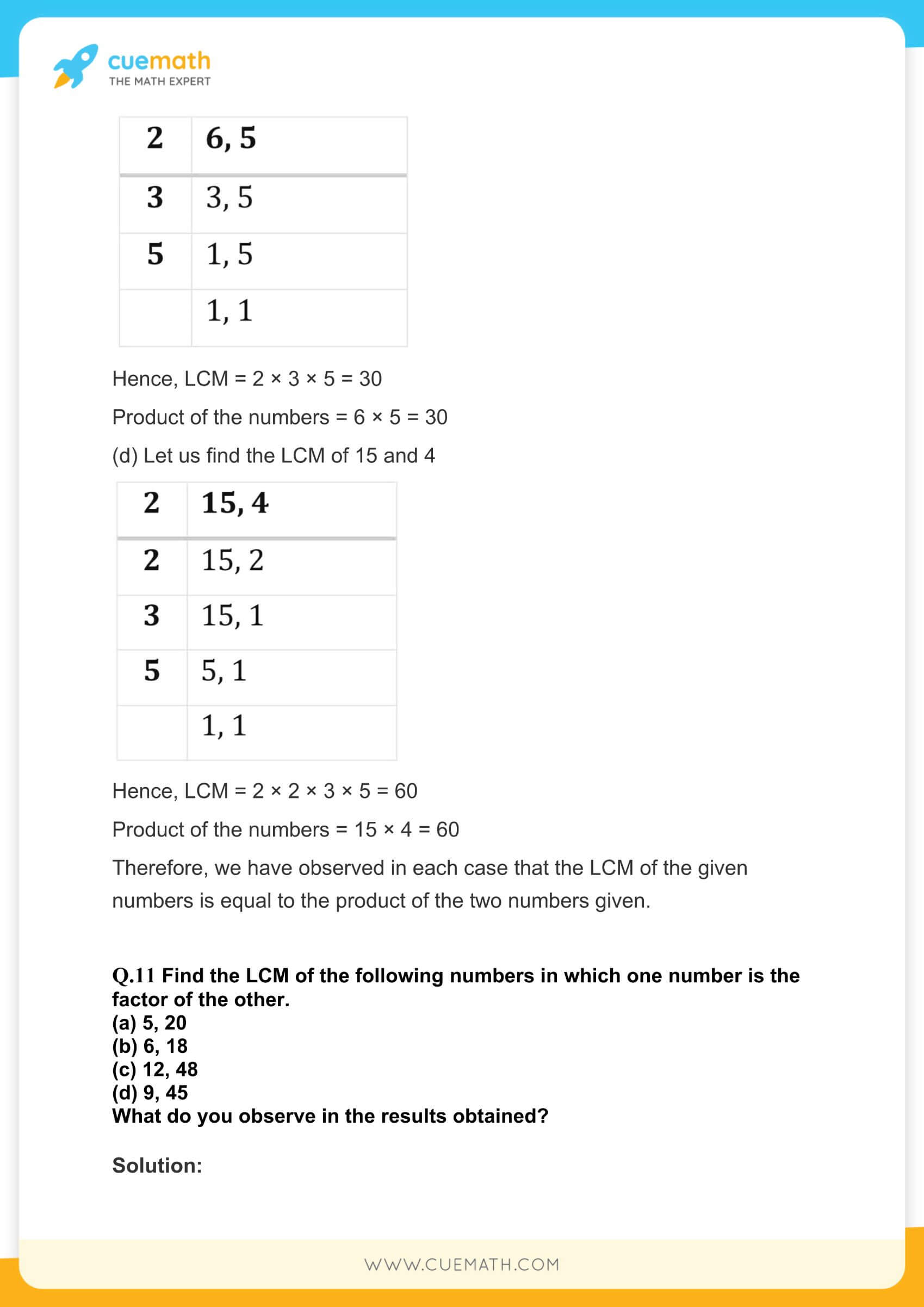
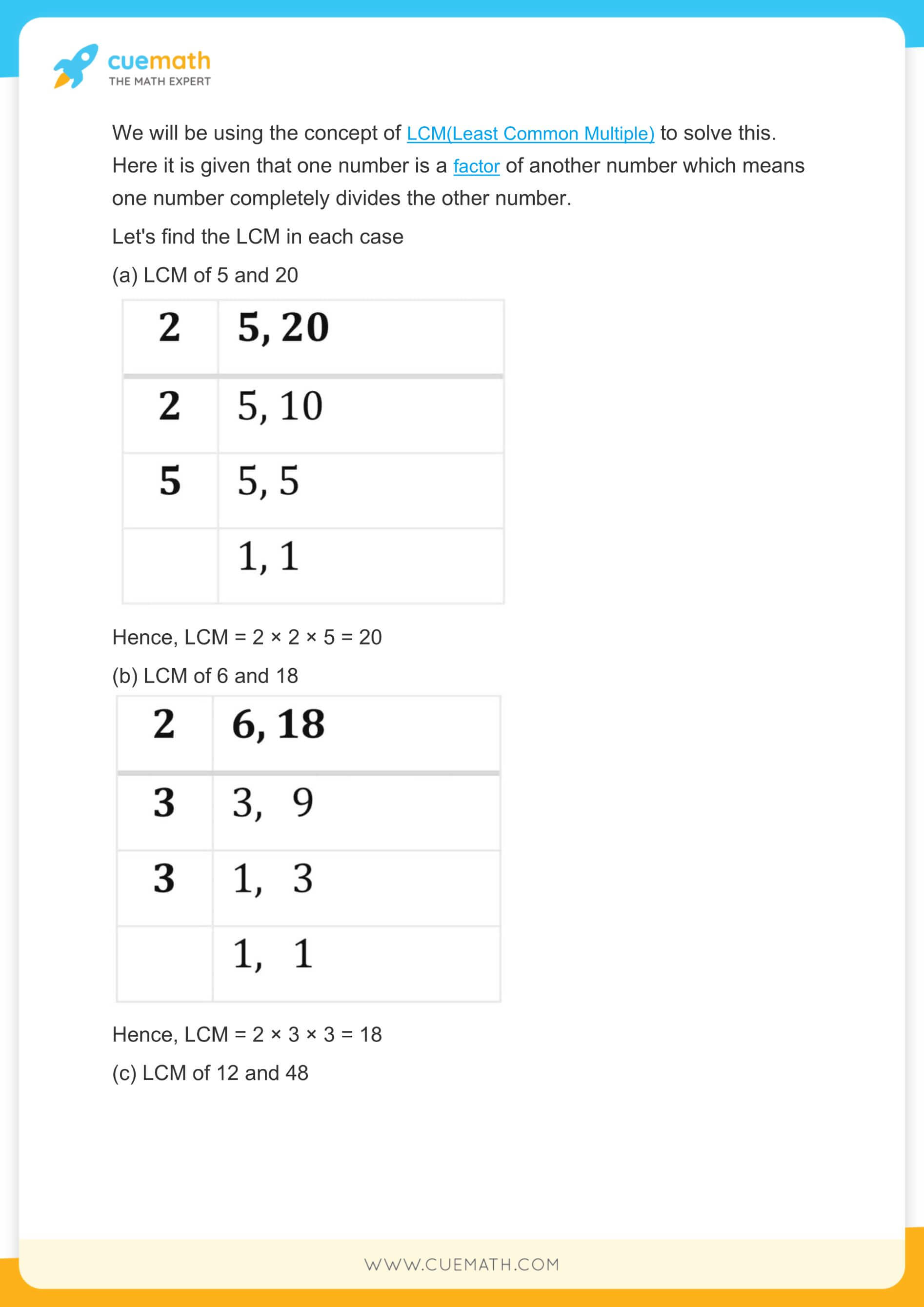
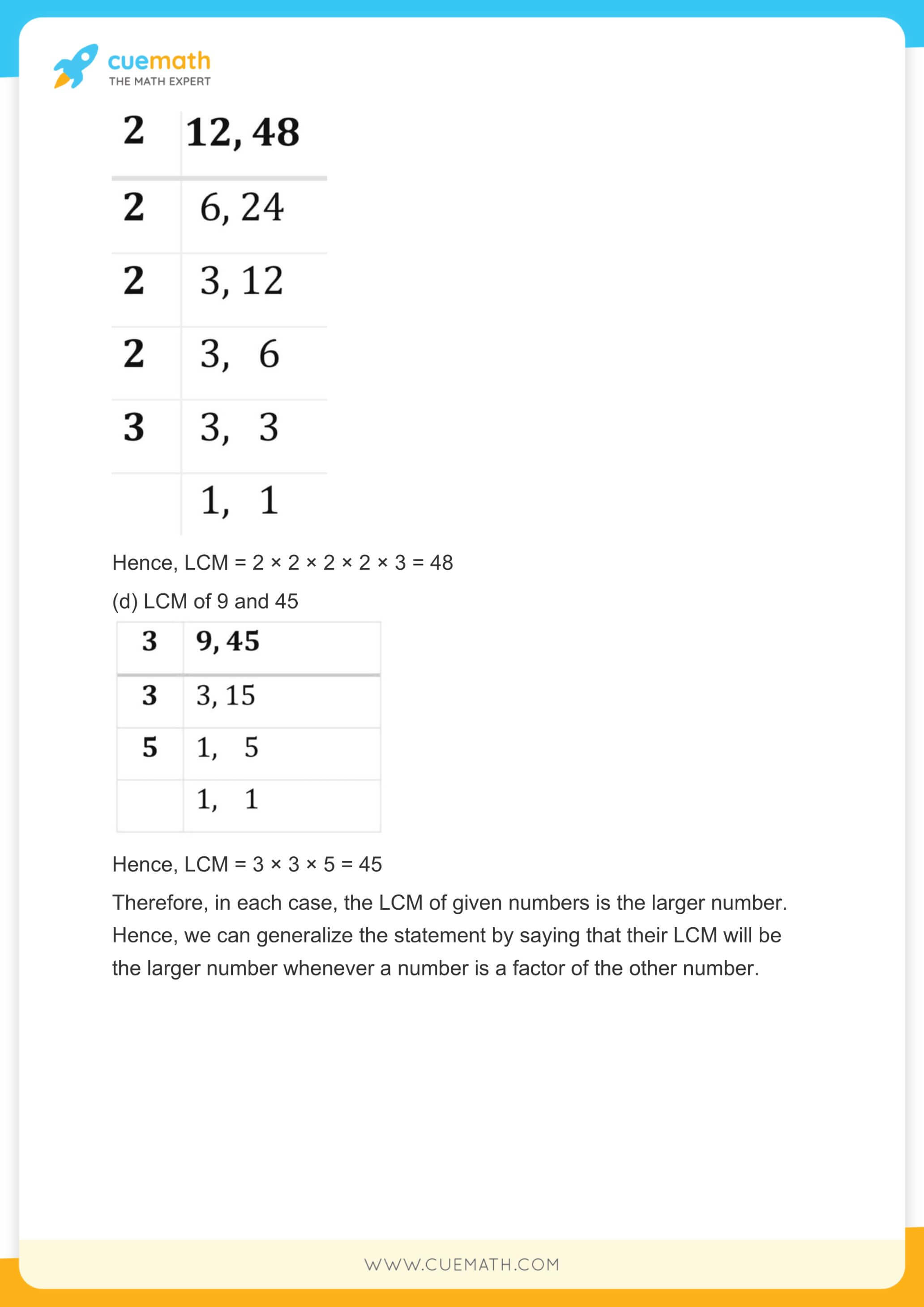
NCERT Solutions for Class 6 Maths Chapter 3 Playing with Numbers
The best way to get strong fundamentals in maths is by practicing many questions on a regular basis. Thus, students need to visit the above links from time to time and revise all the questions. Numbers are everywhere, be it time, date, year, and weather; we use numerals to count things. We utilize numbers for counting money, measurements, phone numbers, phone passwords, locks, reading, page numbers, and TV channels. Engineers utilize numbers in their calculations when creating structures and roadways. They are also used by doctors to check blood counts and administer medications. With such wide applications of numbers, it is important for us to study the numbers in detail. An elaborate analysis of NCERT Solutions Class 6 Maths Chapter 3 is given below :
- Class 6 Maths Chapter 3 Ex 3.1 - 4 Questions
- Class 6 Maths Chapter 3 Ex 3.2 - 9 Questions
- Class 6 Maths Chapter 3 Ex 3.3 - 6 Questions
- Class 6 Maths Chapter 3 Ex 3.4 - 7 Questions
- Class 6 Maths Chapter 3 Ex 3.5 - 12 Questions
- Class 6 Maths Chapter 3 Ex 3.6 - 3 Questions
- Class 6 Maths Chapter 3 Ex 3.7 - 11 Questions
☛Download Class 6 Maths Chapter 3 NCERT Book
Topics Covered: The topics covered under class 6 maths NCERT solutions chapter 3 are multiples, divisors, factors, identification of multiples, and factors. We will also learn how to determine if a number is prime or composite using the factors. Apart from that, we will explore how to find the HCF and LCM using the factors method.
Total Questions: Class 6 maths chapter 3 Playing with Numbers has 52 questions in total out of which 30 can be classified as easy short answer sums, 15 are long answer type problems while the other 7 are complex problems.
List of Formulas in NCERT Solutions Class 6 Maths Chapter 3
NCERT solutions class 6 maths chapter 3 does not consist of any formulas however there are some important concepts discussed in the chapter related to finding the HCF, LCM, and factors of numbers. We will discuss these essential concepts in this section.
- A prime number is any number other than 1 that has only two factors: 1 and the number itself. Composite numbers are those that have more than two factors. Number one is neither composite nor prime.
- If two numbers are divisible by a number, their sum and difference are likewise divisible by the same number.
- The Highest Common Factor (HCF) of two or more numbers is the highest common factor among them.
- The Least Common Multiple (LCM) of two or more numbers is the smallest of their common multiples.
Important Questions for Class 6 Maths NCERT Solutions Chapter 3
| CBSE Important Questions for Class 6 Maths Chapter 3 Exercise 3.1 |
|---|
| CBSE Important Questions for Class 6 Maths Chapter 3 Exercise 3.2 |
|---|
| CBSE Important Questions for Class 6 Maths Chapter 3 Exercise 3.3 |
|---|
| CBSE Important Questions for Class 6 Maths Chapter 3 Exercise 3.4 |
|---|
| CBSE Important Questions for Class 6 Maths Chapter 3 Exercise 3.5 |
|---|
| CBSE Important Questions for Class 6 Maths Chapter 3 Exercise 3.6 |
|---|
| CBSE Important Questions for Class 6 Maths Chapter 3 Exercise 3.7 |
|---|
FAQs on NCERT Solutions for Class 6 Maths Chapter 3
Why are NCERT Solutions Class 6 Maths Chapter 3 Important?
NCERT solutions class 6 Maths Chapter 3 are designed by subject experts from IIT and Cambridge university. This chapter will help you understand the prime role that different numbers and their multiples play in solving an equation. These solutions also include various questions based on the laws of divisibility which are explained in detail. The NCERT solutions class 6 maths chapter 3 are the perfect study material for class 6 students as it will help them review their answers and also provide a step-wise approach to solve all questions.
Do I Need to Practice all Questions Provided in Class 6 Maths NCERT Solutions Playing with Numbers?
It is crucial for the students to practice all the questions in NCERT Solutions Class 6 Maths Playing With Numbers. This will help them understand the concepts better and build confidence, thus enabling them to memorize formulas faster. The main highlight of this chapter is HCF and LCM, and it is essential to practice all of the questions related to these topics. All the problems cover a variety of subject matter, thus allowing students to get a better grasp of numbers.
What are the Important Topics Covered in NCERT Solutions Class 6 Maths Chapter 3?
All the topics covered in NCERT Solutions Class 6 Maths Chapter 3 are equally important. However, to streamline the studying process, students need to give ample time in preparing questions based on HCF, LCM, and factors. Additionally, they must also go through the entire theory of the chapter to understand the concepts better.
How Many Questions are there in Class 6 Maths NCERT Solutions Chapter 3 Playing With Numbers?
There are 52 questions in the NCERT Solutions Class 6 Maths Chapter 3 Playing With Numbers. These are divided into seven different exercises. Exercise 3.6 and 3.7 are the most important exercises from an examination perspective, covering important topics like the prime factors, HCF, and LCM of numbers. Since these concepts are new to students, they should engage in activities to understand these concepts in a more practical way.
What are the Important Formulas in NCERT Solutions Class 6 Maths Chapter 3?
Students will come across many important concepts in the NCERT Solutions Class 6 maths chapter 3. We do not have any important formulas in this chapter; however certain facts like every number is a factor and multiple will help them understand the prime role that different numbers and their multiples play in solving an equation. Students must go through all the questions and solve the examples in order to develop a rock-solid foundation.
How CBSE Students can utilize NCERT Solutions Class 6 Maths Chapter 3 effectively?
To effectively utilize the NCERT Solutions Class 6 Maths Chapter 3, kids must first go through the theoretical concepts and activities discussed in the chapter. Topics such as common factors and multiples, divisibility laws, greatest common factors, lowest common factors, etc., are introduced to the kids. Students will be able to understand prime and composite numbers, as well as their differences, provided they have a thorough understanding of the chapter. This will help students identify practical ways of solving a problem.
visual curriculum